#or during the nick Spencer era
Text

Spider-Man/Peter Parker & Mary-Jane Watson by Tom Reilly.
#spidey#MJ#sunset#romance#romantic#spider man#mary jane watson#peter parker#tiger you just hit the jackpot#new york#building#kiss#rooftop#tom reilly#fan of ben Reilly of course#marvelous#beautiful#before one more day#or during the nick Spencer era#take your pick
88 notes
·
View notes
Text
Finding Fleetwood Mac's Mysterious, Enchanting, and Haunting Energy (Part 1)
As I've dived deeper into Fleetwood Mac's discography, I've realized that you can't pin most of the band's mysterious, enchanting, and haunting energy to Rumours. It's always been in the band.
The type of blues with Peter Green / Danny Kirwan / Jeremy Spencer that Fleetwood Mac was putting out naturally had dark and mystical themes, a prime example being The Green Manalishi (Then Play On - 1969). It's literally the same thing as Gold Dust Woman (Rumours - 1977), as he uses a witchy figure (and her effects) to describe his issues at that time with the struggles of money and drugs that come with being a musician, as well as shrieking instruments and howling throughout the song.
Other songs, like Albatross (1968) and of course Black Magic Woman (1968) also have ethereal and bewitching themes too.
It's also worth mentioning that the band was on drugs like LSD at this time too. Peter Green eventually Syd Barrett'ed out of the band; mental illness and drugs made him spiral and leave in 1970. So obviously, trips, delusions, and the users pretty much losing themselves to addiction during the creative processes, in addition to already being rooted in a dark and mythical genre means that the music is going to have an eerie, almost grieved, edge to it.
In my opinion, after Peter Green leaves the band, only a few songs between the end of his era and the beginning of Buckingham/Nicks carry the same heavy sound and theme I want to discuss. So before I next post on this topic (dealing with after Rumours), I suggest listening to the album Then Play On (1969) as there are many other songs I didn't bring up but still have the Fleetwood Mac sound mostly associated with Rumours. My favorites are Oh Well, Pt 1., World in Harmony, Closing My Eyes, One Sunny Day, and Before the Beginning.
#fleetwood mac#classic rock#peter green#mick fleetwood#lindsey buckingham#stevie nicks#christine mcvie#john mcvie#danny kirwan#jeremy spencer#sorry for the corny ahh title
8 notes
·
View notes
Text
Minnesota Twins-Cincinnati Reds Series Preview
9.18.23-Joe Ryan RHP (10-9) 4.20 ERA Vs. Connor Phillips RHP (0-0) 8.31 ERA
9.19.23-Kenta Maeda RHP (5-7) 4.50 ERA Vs. TBA
9.20.23-Bailey Ober RHP (7-6) 3.67 ERA Vs. Hunter Greene RHP (4-6) 4.45 ERA
The Twins At A Glance- The Twins took three of four from the White Sox and have dwindled the Magic Number down to six. The team now heads to Cincinnati to play a decent Reds team. Michael Taylor should be activated sometime during this series. Brock Stewart looked good in a shutout inning for the Saints on Friday. He should get one or two more rehab outings before the team activates him on the homestand. Joey Gallo should be starting a rehab assignment with the Saints this week and Nick Gordon will continue his rehab in St. Paul. Chris Paddack struck out six over four innings and gave up two runs in a rehab start last week. Jorge Alcala has thrown three innings and allowed two runs in three rehab outings. Royce Lewis has been on a tear with five homers and twenty-two RBI in September. Jhoan Duran has five straight scoreless innings. Caleb Thielbar has a scoreless streak of 7 2/3 innings.
The Reds At A Glance- The Reds have had a surprisingly good 2023 season. They are half a game behind the Cubs and Marlins for the final National League Wild-Card spot. They took two of three from the Mets in Queens before returning home for their final homestand of the season. Elly De La Cruz was the talk of baseball when he emerged on the scene in June. He is hitting just .235, but has eleve homers and thirty-six RBI. He also has twenty-nine stole bases and will likely be running wild in this series. The Reds also have to thank the Tyler Mahle trade for their success. Christian Encarnacion-Strand has eight homers and Spencer Steer has been great. Steer has twenty-two homers and eighty-one RBI in his rookie campaign. The Reds system seems to be loaded with lots of talent. The Reds starting pitching has been bad with a 5.40 ERA, which is third-worst in baseball. The Twins will face one of their best starters in Hunter Greene on Wednesday. The Cincinnati bullpen has a 3.90 ERA, which is in the middle of the pack. Sam Moll has been a great addition. He has given up two runs over twenty innings since being traded over from the A's. Alexis Dias has locked down thirty-seven saves.
What To Watch For- The Reds are (16-15) all-time against the Twins. The two sides split four games in 2021. The Twins were in Cincinnati in August of 2021 with both sides winning one game. Kenta Maeda is (2-1) with a 4.62 ERA in five games against the Reds. Hunter Renfroe has two career homers off Maeda. Bailey Ober gave up four runs over 4 1/3 innings in his lone start against Cincinnati. You will see a matchup of the top two picks from the 2017 MLB Draft. Royce Lewis will face Hunter Greene. I remember writing about some of the guys that the Twins could draft. Greene was up there with Kyle Wright and Brendan McKay. The Twins choice Royce Lewis and we're seeing why he was the top pick. This is the last series for the Twins against a playoff contender. The Twins likely won't clinch, but should inch closer before the homestand.
-Chris Kreibich-
0 notes
Text
Album Review: Philip Selway “Strange Dance”
Radiohead are bigger than the sum of their parts: When I saw them live in 2018, I was blown away by the fact that they were actually even better than when I saw them in 2001. Much like Foo Fighters and the E Street Band, the band members have explored multiple solo and side projects during the band’s down time: Jonny Greenwood has become one of the best film composers of his generation (read my reviews of his soundtracks to You Were Never Really Here, There Will Be Blood and Spencer here); Thom Yorke has done some solid solo albums and he has scored films like Suspiria (read my review here), Ed O’Brien (under the name EOB) has released the stellar solo album Earth (read my review here), Colin Greenwood has been performing with Nick Cave’s touring band, and last year Yorke and Jonny Greenwood’s side project The Smile released A Light for Attracting Attention, which I just named my #1 Album of 2022. This week will see the release of Radiohead drummer Philip Selway’s solo album Strange Dance on Bella Union.

album cover
This is actually the third solo album from Selway (4th if you count his soundtrack to 2017′s Let Me Go). His 2014 album Weatherhouse was highly impressive. As the drummer in a band with Yorke, EOB, and the brothers Greenwood (Jonny and Colin), it’s easy to just stay in his lane and only drum, but as a solo artist he has gotten to sing, play guitar and other instruments. On this particular album he doesn’t even play the drums, he left that to Italian drummer Valentina Magaletti. Other musicians on this album include Adrian Utley (of Portishead, who also played on EOB’s Earth coincidentally), Quinta, Laura Moody, and Hannah Peel.

Selway sans drum kit
“One of the things I’ve liked about this record is it’s me as a 55-year-old not trying to hide that fact,” said Selway. “It feels kind of unguarded rather than seeing that ageing process as something that needs to be hidden.” Well put! You need to go into this album with the understanding that it is not a Radiohead or even a Radiohead-esque album. A case could be made that EOB, The Smile, and some of Yorke’s solo work fall into that comparison of “if you like Radiohead, you’ll like this...”, but here Selway is exploring other sounds and flexing his folk and art rock muscles. While there are Radiohead-like tendencies that appear from time to time, it is a little different. There’s definitely some Massive Attack influence appearing throughout, but I also heard some diverse influences like Pearl Jam and even “Silent Lucidity”-era Queensryche. While Radiohead are one of the best bands on the planet (A Moon Shaped Pool was my #1 Album of 2016), the solo albums are quite intriguing as they show the band members’ strengths as well as aspiring to sounds outside of Radiohead.
For info on Philip Selway: https://www.philipselway.com/
3.5 out of 5 stars
0 notes
Text
: ̗̀➛ 𝐀𝐋𝐄𝐗𝐀𝐍𝐃𝐄𝐑 𝐌𝐎𝐑𝐆𝐀𝐍

the mortal sun has risen and set a thousand thousand times, and HERMES is yet bound to the earthly realm, the reincarnation loop continues. this time their mortal coil has taken the shape of dylan o'brien, a human born on 24/08/1995, a virgo and named alexander rhys morgan.
TLDR found here
POWERS: the ability to manipulate anyone through persuasion, can feel the energy of spirits passing through wherever he was, mundane abilities and skills are enhanced during the night, above average speed when running (let's be real that's only handy for him when he's running away from authorities or ppl tryna break his nose)
FULL POWERS (not fully achieved but there's an inkling): getting into the minds of people, making them see and feel what he wants them to and would usually be used to play tricks on people, and the ability to communicate with the dead at night.
TW: familial death, car accident, mentions of mental health issues
PINTEREST / PLAYLIST / HERMES’ PLAYLIST
FULL NAME: alexander morgan
SEXUALITY & PRONOUNS: bisexual, he/him
ROMANTIC STATUS: single
BIRTHDAY: august 24th, 1995
HEIGHT: 5′9
HAIR: blonde buzzcut era
BIG SIX: virgo sun, aquarius moon, aries rising, leo venus, leo mercury, scorpio mars
PETS: a bombay cat named soup
HOMETOWN: brighton, england
ACCENTS: english accent mixed with slight australian over the years
OCCUPATION: bartender @ olympus nightclub
ROOMMATES: augustus henry keene
SIBLINGS: chloe “charming” morgan (adopted)
TATTOOS & PIERCINGS: a bunch of dumb little tattoos all over. most notably, a tattoo of a small SUN on his wrist, a CARTOONISH SNAIL on the back of his arm, and a SMILEY PIERCING
MENTAL HEALTH: depression (undiagnosed), ADHD (diagnosed from a young age)
MUSE INSPO: shawn spencer (psych), nick miller (new girl), summer (500 days of summer), robin scherbatsky (how i met your mother), lucien carr (kill your darlings), max wolfe (gossip girl), steve harrington (stranger things), jeremiah fisher (the summer i turned pretty), eleanor shellstrop (the good place), dylan lenivy (the quarry), lip gallagher (shameless)
BACKGROUND:
alex grew up in brighton, england surrounded by a family he loves and that loves him. he had a good social life and okay grades. as a kid, he was always known to have a bright and loud personality, the kind of crazy in a child that was endearing and charming (yet extremely annoying to both of his sisters). he was always known that he would grow up to be a troublemaker, since he discovered his love for causing it from a young age. his mother (scarlett hart) was a child psychologist, and his father (james morgan) was a stay-at-home dad and an aspiring author. he actually named his son alexander after one of his main characters of a book he was planning on publishing. his older sister was isabelle morgan, and his younger sister was adopted when he was really young -- chloe morgan, better known as charming morgan, as she prefers.
//TW: MENTIONS OF DEATH AND LOSS// tragedy struck when he turned 13, and was woken up to the sounds of his father crying in the living room and red and blue lights coming in through his window. his mother and older sister had gotten into a car accident after she had picked isabelle up from a party she wasn’t supposed to be at, and they both died that same night from the impact. things around their house changed after that -- their father stopped writing, and tried his best to be a good father for both alex and charming but even alex could see that he was barely hanging on. charming had begun to rebel, putting even more worry onto alex and james -- james was more understanding and forgiving, because he knew it was probably her way of coping.
one year later, james impulsively decided that a fresh start was needed for them all, and wanted to move the family to magnetic island. as a 14 year old boy who had already gone through so much loss, alex was surprisingly in support of this -- he didn’t know why, and couldn’t explain it, but when he heard ‘magnetic island’, it’s like something in him clicked. he didn’t know what it was, but he felt it. and so, after a couple long months of getting ready for the big move, they finally made it -- just in time for alex to turn 15.
he loved his new life there -- he was finally beginning to feel like himself again. in fact, he feels like he’s exactly where he belongs, it’s as if the island brought out things in alex that he didn’t know about himself or things he didn’t know he was capable of. his fun, troublemaking nature came back to him, his need for fun and a party returned -- he was happy here. after he graduated school, charming had taken off to the states to pursue a life of her own -- something that james and alex weren’t too excited about, given she was only 16. but even at 16, charming could always take care of herself. alex, however, didn’t think that university was for him; he worked a couple of jobs here and there, and even got into a bit of gambling when he realized how GOOD he was at calling people’s bluff and manipulating others into scoring a win for himself. it was around 18 that alex first realized how good he was at persuading others to do whatever he wanted them to do, and at many points in his life, he took advantage of it. but most of the time, he just used it to fuck with people and entertain himself.
finally, at 22, he settled into a bartending job at olympus nightclub that he loved, so here he was -- 25 and still working there. in reality, at some point int he future, alex wanted to follow in his father’s footsteps and become a writer, as well. but for someone so brave with everything else in his life, he had a hard time showing anyone else his writing for the time being.
PERSONALITY:
alex is a funny, class clown type that isn’t afraid to speak his mind at all and is always looking for anyway to occupy his time, and always looking for a party. he’s really easy to get along with, but he also has a small, tiny bit of a temper that usually manifests itself into fucking with whoever pissed him off and becoming the most sarcastic, punchable piece of shit you’ll ever meet. he will instigate fights at bars when he’s bored, and most of the time, they escalate into physical fights that he certainly cannot win. but if you ask him, he’d do it again, enjoying the adrenaline rush that came with it. a walking red flag, i know.
while alex may seem really happy on the surface, he’s dealing with a great deal of mental health issues -- mostly episodes of depression. but he still refuses to admit that he has issues, and that he needs professional help. if you ask him, he’ll bark back and say i’m fine.
from a young age, though, he was diagnosed with ADHD -- his mother caught on quick, with her being a child psychologist, and immediately took him to get evaluated. alex still constantly forgets to restock and take his pills without constant reminders from charming and his dad, and it makes him super hyperactive, impulsive, and easily distracted/bored and eager to move onto the next thing.
he can’t help but have a flirty personality. if he’s bored, he’ll probably flirt with someone either just for the purpose of knowing he can get them if he wanted to, or to fuck around and hook up (he wasn’t exactly a commitment type guy at all) . sooooo yes he a Whore.
at the end of the day, alex wants to become a writer like his father — or he’ll dream about it, while he reads and writes as a hobby in his own private notebook.
he’s a non-conformist at heart, and will always try to go against the grain of society and its norms. he enjoys sparking reactions out of people.
HEADCANONS: he likes to wear eye makeup and nail polish a lot, mostly puts the obscure eye makeup on at events and parties. he has a black 67 chevy impala car that he is obsessed with. alex is aware that not only was he great at lying and manipulating, but he was also good at calling people’s bluff so he spends a good amount of time gambling in any way he finds, because he knows he’ll win. his cat, soup, is a rescue cat.
7 notes
·
View notes
Text
On Supergirl
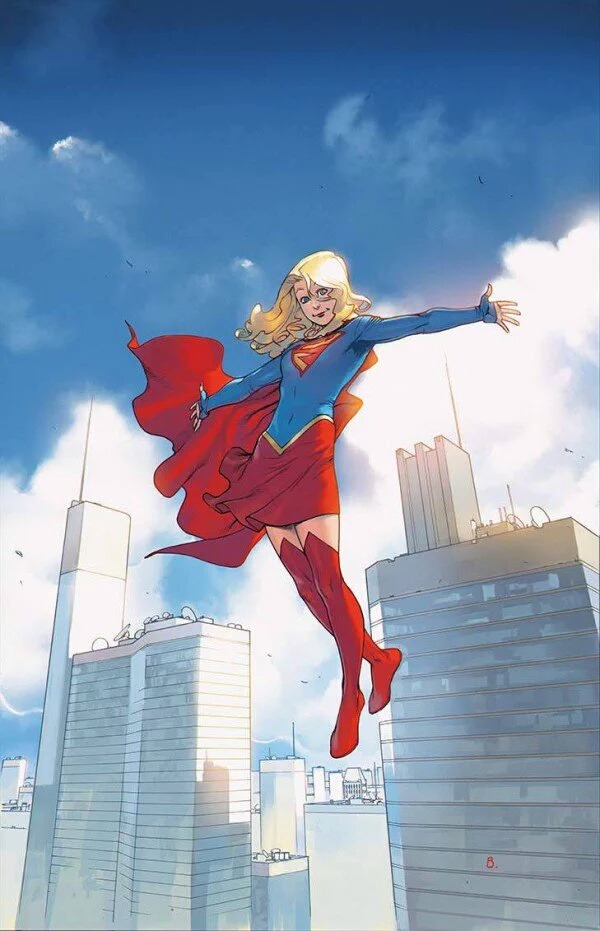
Figured I should put up my thoughts about Kara in the wake of her first film appearance being announced, and the final season of her TV show fast approaching. Short version is: Kara is very cool and DC needs to stop messing with her.
My Introduction to Kara
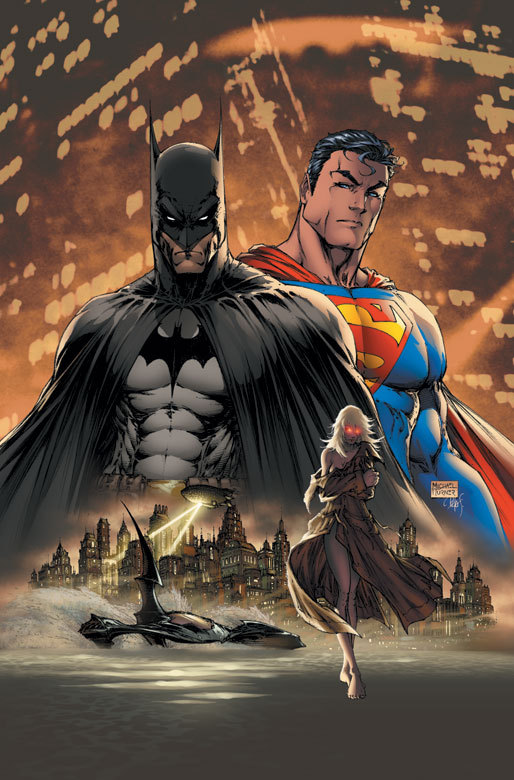
I was introduced to Kara the way most millennials/Gen Zers were I imagine, via the Loeb Superman/Batman arc which brought the traditional Kara Zor-El Supergirl take into Post-Crisis continuity, after years of DC attempting to have a “Supergirl” without violating the editorial mandate that Kal needed to be the literal “Last Son of Krypton” (an example of one of the dumb ways DC fucked Kara over). Story goes that one day Dan Didio was in line at the Superman ride at Six Flags (I love that ride even though it’s stolen my glasses every time I’ve ridden it, even when I left them in a locker!). The ride had signs that talked about various Superman characters. Didio was reading the entry for Supergirl where it talked about her not being Clark’s cousin but instead some weird merge of alien shapeshifter, angel, and human girl, and he realized how fucking stupid that was, and he went back to the office and told Loeb to bring Kara back.
Years later I would also be standing in line at the Six Flags Superman ride (probably at a different park location but who knows?) as a youngster and would read the new Supergirl sign that trumpeted that Superman had a cousin who shared all his powers, an update reflecting the new Loeb origin. I thought she sounded pretty cool, made a note to see if my library had any Supergirl stories next time I visited, then got on the Superman ride and promptly lost my glasses like an idiot because I wanted to take them off while I was riding and pretend I was changing from my “disguise” into Superman mid flight. My dad grounded me for this afterwards, but it gave me a funny story to tell at family get togethers and isn’t that what Six Flags is all about?
A month later (and with spiffy new glasses), my mom dropped me off at a new library next to where she worked, and they had one of the best Superman collections I’ve ever seen to this day. I was in heaven and while reading every Superman book I could find (I couldn’t check them out because I didn’t have a card, my mom’s card didn’t cover the area the library was in, and my mom wouldn’t have checked them out anyway since comics were “too violent”), I found the trade collecting Kara’s new origin. I read it and I thought both she and Superman were really cool, and Batman was a punk who had to beat Darkseid by cheating, the loser. Turner’s art to my young eyes was the best I had ever seen, and the panels got engraved into my brain.
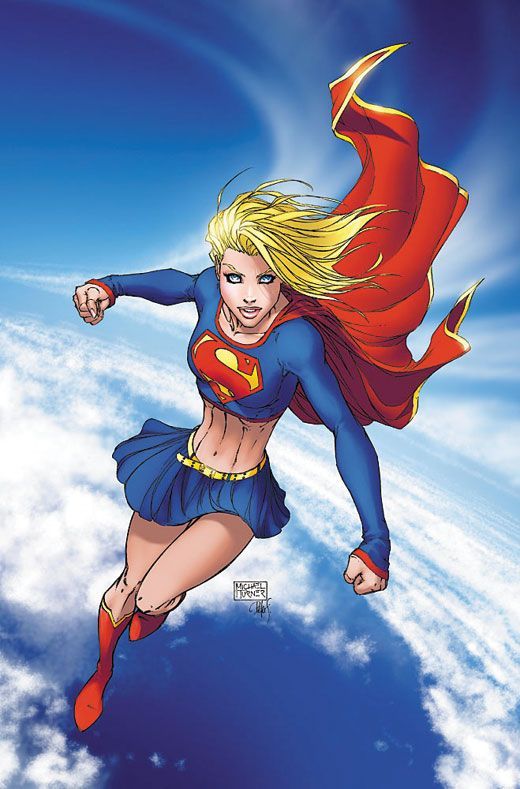
I still get downright nostalgic whenever I see Turner Superman or Supergirl stuff. I also got my parents to rent the animated movie adaption of the Superman/Batman arc from Blockbuster (remember those?), and that sealed the deal. Seeing Kara hold her own against Darkseid convinced me she was as cool as her cousin. Next time my mom dropped me off at the library next to her workplace, I went looking for Supergirl stuff to read. I found the first volume of her new volume by Joe Kelly taking place after the Loeb arc and dove in.
It was... weird. 5 years later I might have enjoyed it but at the time I was majorly put off. Kara took a secret identity for a day and then ditched it because it was “stupid” and the kids bullied her. She was always getting into fights with Kal, and there was this weird plot that I couldn’t follow about how her dad had sent her to kill Kal, maybe or maybe not? Also she could grow crystals which I thought was dumb, and said she was stronger than her cousin which I couldn’t buy for a second given he looked like he was carved out of marble, and she looked like she relied on sunlight instead of food. I put the volume back on the shelf and kinda gave up on reading the character after that for a while.
I followed her via the DC wiki updates just like I did Superman, and everything I read seemed dumb and convoluted. She was split in two, moped around a lot, made out with an alternate version of her cousin, and basically just flopped about the same way the rest of the Superfamily did during the 00s. Nothing made me think I had made a mistake dropping Kara until I read the latest update to her wiki page.
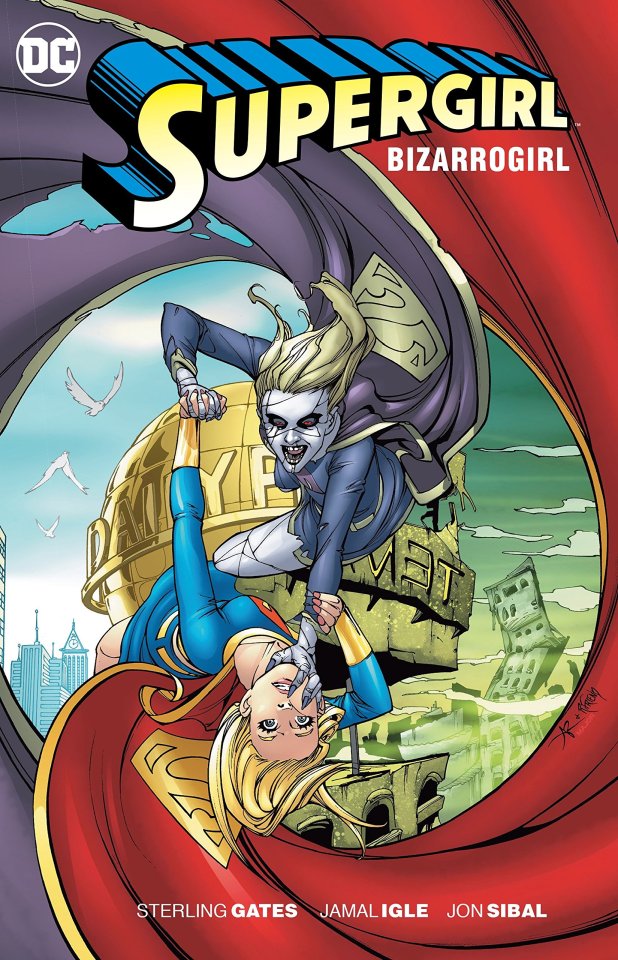
I was super into what I was reading about the Busiek/Johns era of Superman online. Lex was back and making a big revenge scheme that involved all the other Rogues! Old Superman Rogues were getting revamped and made cool again! Johns reintroduced Brainiac and made him a big threat, with Kal and Kara teaming up to fight him! Busiek was revamping Prankster and telling big ambitious Superman stories! For the first time in a long while, the consensus on the Internet was that Superman was good again. My “home” library had zero Marvel books and no Superman or Batman books, all their DC stuff was Flash or Green Lantern, mainly written by Johns. Insane to think back on now. My hopes that because Johns was involved with Superman, Superman books would show up at my library were fulfilled. They started bringing in Busiek and Johns collections, and someone there also ordered Sterling Gates’ first volume of Supergirl, and I checked everything out since I was old enough to have my own library card, and my parents were worried more about the violent video games I was playing rather than comics.
I read everything and loved it. I also really liked Gates’ take on Kara. She was still an imperfect teenager but she wasn’t insufferably angsty or constantly fighting with Kal. She was going to give the secret identity another try and Lana had “adopted” her. It’s funny remembering how I enjoyed all that given my current thoughts on how Kara should work, but it was great at the time. I liked Gates introducing new foes for Kara, some classic Superman Rogues adapted for her like Bizzarogirl, others crafted specifically for her like Reactron. Gates’ basically rekindled my enjoyment of Kara the same way Busiek & Johns rekindled my enjoyment of Superman.
Of course it ended terribly like everything Superman-related seems to.
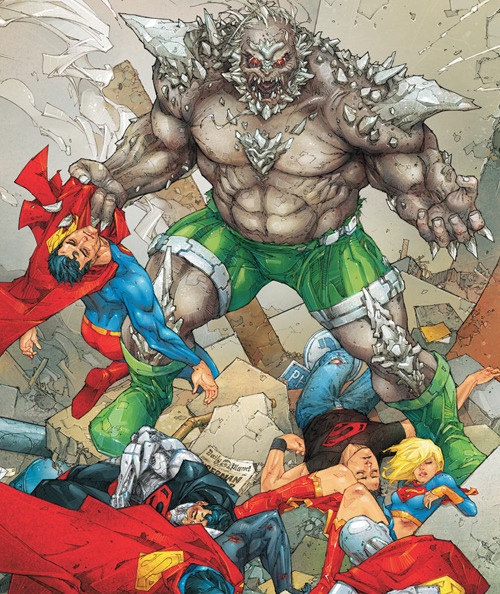
I’ve got a whole post I want to do about New Krypton and what came after. In short that is the most blatant example of “hitting the reset button” that I’ve ever seen. All the potential got wasted, and afterwards everything except Lex’s Action Comics stuff just didn’t appeal to me. Gates got booted off Kara for Nick Spencer who ended up leaving himself later, a promising Teen Titans line-up with Kara on it didn’t happen, and the last proper Pre-Flashpoint Superfamily story was a crappy team-up with Doomsday against Bigger Doomsday (thank God for Cornell’s final Luthor/Superman confrontation at least). When news of the reboot arrived, I was honestly happy. The Superline needed an enema.
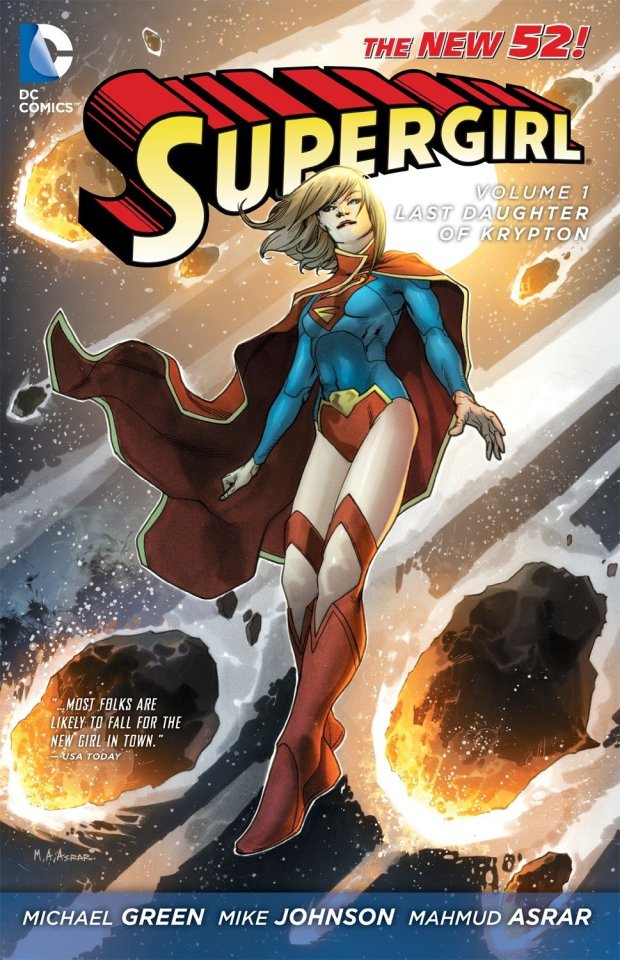
Controversial opinion time: I liked New 52 Supergirl. It’s weird because a lot of the stuff I hated about Kelly’s run was here, and a lot of the stuff I loved about the Gates’ run was not. This was angry, moody, emotional Kara again, fighting with Kal and not fond of Earth. But I was in my teens at this point, and I didn’t want happy go-lucky Superman or Supergirl. I wanted my heroes angry, scared of the future, ready to go out there and smash some cars. Morrison’s Action Comics was 100% my jam (still is once I really understood the deeper meaning beneath the work) and this Kara felt like a natural fit for this universe. Plus we got Asrar on art and that guy made it damn pretty to look at, lots of cool science fiction stuff going on, even with the dumb H’el storyline.

I loved all the new Rogues Kara got. I loved her new Fortress under the ocean. I loved how traumatized she was by the loss of Krypton, that she wanted more than anything to go home, that her cousin was like a stranger to her since they had been apart for so long. I found all of that incredibly relatable. A lot of the New 52 Supergirl stories might have been schlock but it was my type of schlock damnit, and I enjoyed it!

I kept with her New 52 series all the way through the Red Daughter Saga (which I loved). As someone who grew up on Johns GL (since that was the only comics my home library had), seeing a Supercharacter join a Lantern Corp was the hypest thing ever. I loved the finale about Kara finally letting go of her anger and losing the ring while smashing her foe into the sun, it was incredibly cathartic for me as an angry teen myself. I finally stopped following her series sometime after since I was no longer enjoying the Superline or really DC as a whole. It wasn’t until I heard that New 52 Superman died and the “old” Superman was back, that I checked back into DC.
DC Rebirth & How I Think Kara Should Work
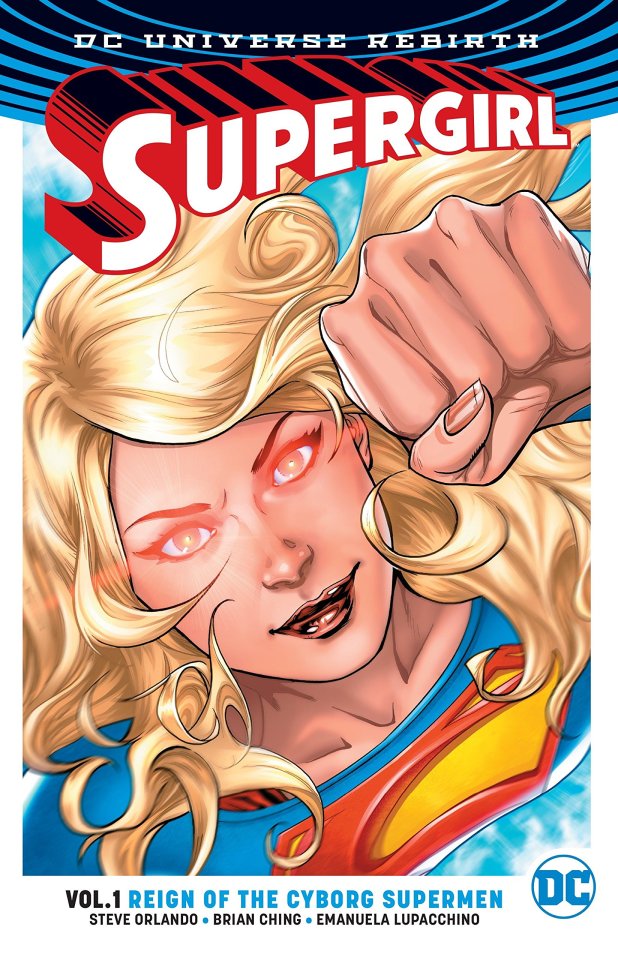
I did not enjoy Supergirl Rebirth, and I think I’ll talk about my problems with it alongside how I think Kara as a character should work since the two are related. A pet peeve of mine that has formed over the years is this: I don’t like it when Superfamily members get turned into Clark clones. Kon wearing glasses and going to Smallville High. Kara going to high school and being involved in journalism. Jon more or less being written as a copy of his dad personality-wise. I hate that kind of stuff because it’s boring. What’s the point of a Superfamily if everyone is just copying Clark? It also doesn’t fit the characters especially in Kara’s case. Why the hell does she want to be a journalist? Were there journalists on Krypton? I don’t remember ever seeing one! Shouldn’t she want to be, I dunno, a scientist? That seems to have been the El family tradition, wouldn’t she have been groomed for that?
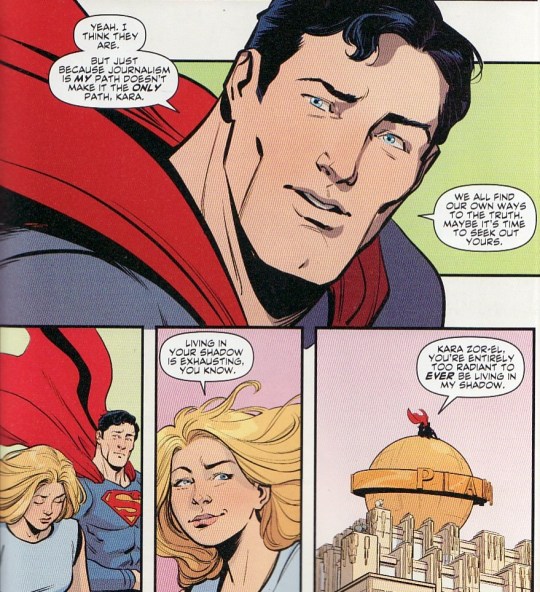
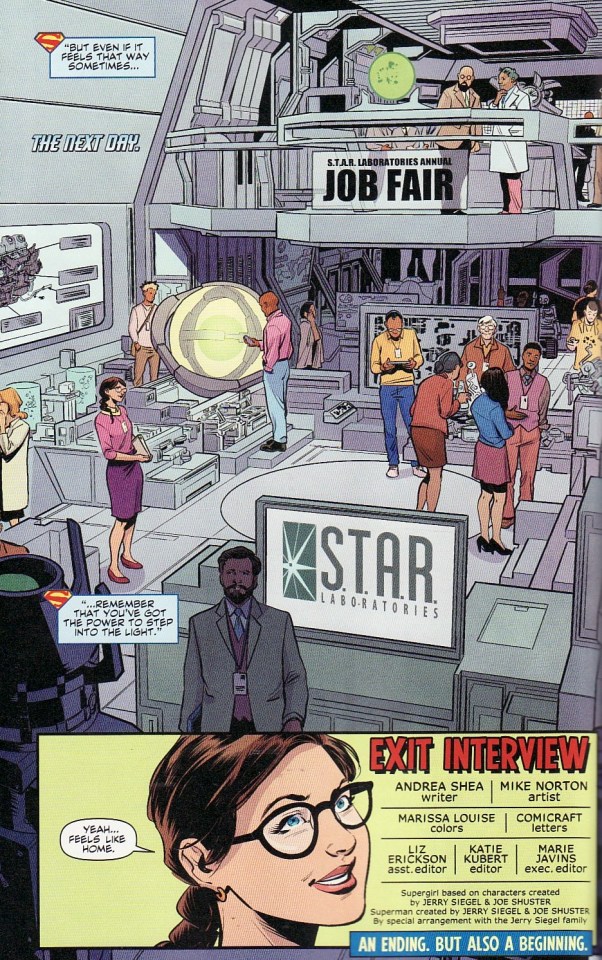
This one-off by Shea is honestly the only acceptable outcome for Kara going into journalism for me. She realizes she’s just copying her cousin and switches to something she wants to do. So Orlando copying the show, which already basically turned Kara into an expy of her cousin, just did not appeal to me at all. What had worked for me under Gates way back when was not clicking for me this time. I wanted to see Kara embody the principles of the S-shield in a different way than her cousin did. So I really enjoyed when Rebirth ended and we moved into the Bendis era with Andrekyo relaunching the title as Kara in space.
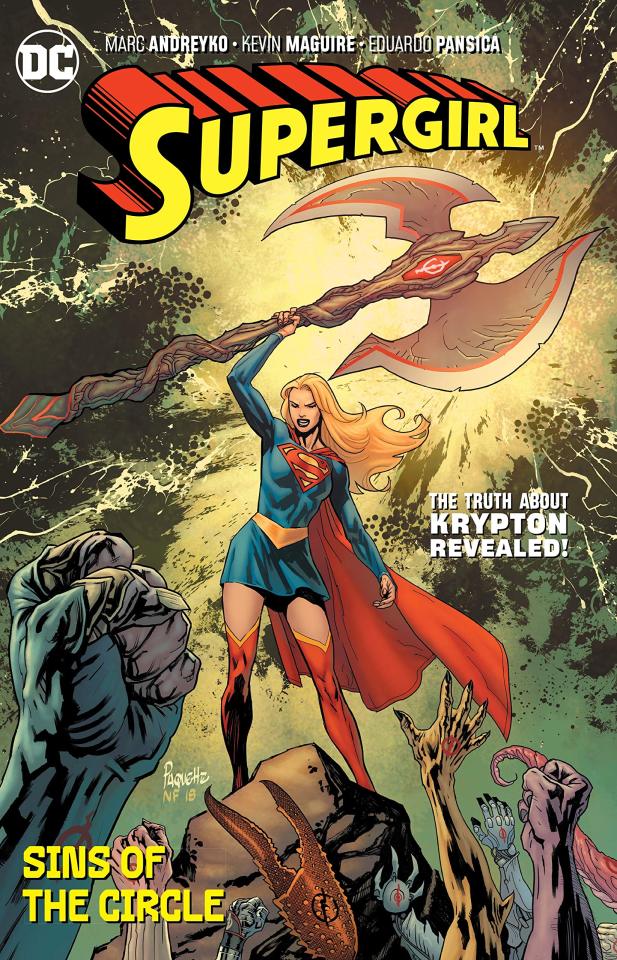
Kara in space has always felt like a good fit for me. Unlike Kal I’ve come to believe that Kara really shouldn’t be all that fond of Earth. For him it’s home, but for her it’s just where she ended up after her real home got destroyed. I think Kara works well as a sort of nomad, occasionally making stops back home to Earth to check on her cousin, but otherwise? She’s more comfortable out in space than she could ever be on Earth. Out in space she can be Kryptonian (which is what she should think of herself as in contrast to Clark being torn between his Kryptonian biology and human upbringing, and Jon/Kon identifying as human), be her true self, not have to pretend to be human to fit in. Kara founding a moon refuge was one of the best ideas for her that I’ve seen, I would love if DC made her Future State refugee center on the moon canon. I’m excited for more Kara adventures in space with the upcoming Tom King story.
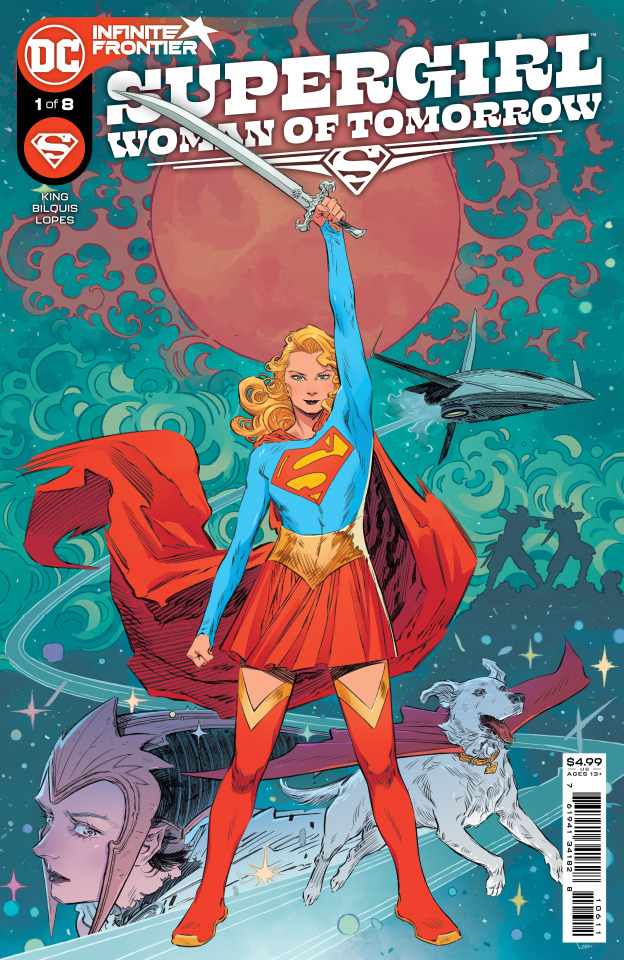
Also love that her and Krypto are getting tied together, if they don’t want to use Krypto in Superman’s stuff, let her have him! Bring on cosmic adventurer Supergirl!
Personality & Other Traits
Kara to me should be more hot-tempered than her cousin. All the Superfamily members should have a temper in my opinion, I see that as the “Deadly Sin” of Superman and his family. But while Kal is like a simmering pot that will explode if it’s left cooking for too long, Kara is like dynamite. Light her fuse at your own peril because she will go off on you.
I also like the idea of Kara being rash. Kal’s got a maturity that came from over a decade of having to live with Lex Luthor constantly getting away with all his evil schemes. He’s patient because he’s been forced to be. Kara? If you ask for her help she’ll give it, but beware because she doesn’t really care about the long term impacts of her decisions. She’s an invulnerable teenager after all.
Really liked that Venditti Annual where Kara got tutored in history by a reincarnation of Hawkman. Kara having a passion for history is a neat trait, would be nice to see her teach Kal or Jon some Kryptonian lore, or have her lead a Kryptonian holiday celebration for the Superfamily because she’s the only one who remembers how to do it.
Sexuality wise I know a lot of people ship Kara and Lena on account of the chemistry between the two in the show. I haven’t watched the show myself but I’m fine with making Kara bisexual, the Superfamily could use some LGBT+ rep, and Lena hasn’t done anything of worth as a villain, so undo that and throw the two together. If we’re letting Harley and Ivy get away with murder I think we can let Lena off the hook too, undo the Ultrawoman weirdness and put the two together. Could be fun seeing the two building that moon refuge together.
All in all I think Kara is a great character who is a stronger embodiment of the immigrant experience than even her cousin in some ways. I hope King does a good job with her, she’s treated better than her cousin on the film side, and that overall the 20s are a better decade for Supergirl than the 10s were.
43 notes
·
View notes
Text
ok @souryogurt64 this is gonna be super brief for rn because i’m in the middle of writing a paper i have to turn in for school BUT here’s some surface level fleetwood mac/70s bands drama
fair warning i’m also definitely not the person to ask for this stuff as there are definitely other people out there who are more well read/documented on this stuff than i am and it’s been a good minute since i’ve... been a part of the classic rock scene i guess lmao
also fair warning to anyone reading this/planning on doing further research: cw for drug use, child abuse, racism, cults, and literally so much more. just be prepared going in.
anyway, fleetwood mac:
we can start off with they were all fucking each other and cheating on each other with each other. i can’t even go into detail on this bc i can’t even follow it
not to mention the amount of hooking up/cheating happening between bands. stevie nicks was involved with multiple members of the eagles, mick fleetwood was involved with jenny and pattie boyd, who was involved with eric clapton and george harrison (the beatles). christine mcvie was involved with dennis wilson (the beach boys). again so much more but i can’t even follow it
this is a direct quote from their wikipedia page: “while on tour in february 1971, jeremy spencer said he was going out to ‘get a magazine’ but never returned. after several days of frantic searching the band discovered that spencer had joined a religious group, the Children of God.”
peter green also had a bad lsd trip and also joined a “christian religious group” later on, and did not return to the band
oh at one point during the cheating bob Weston slept with jenny boyd (who was married to mick fleetwood at the time) and fleetwood was “so devastated” he cancelled 26 tour dates
the sheer amount of drug use was insane and i could write an entire paper on lsd use in the 70s alone but
stevie nicks once said in an interview that at the height of the bands drug use, she would keep a gram of coke in her boot at all times
also just learned this now apparently stevie nicks appeared in several episodes of american horror story
after a split at one point the band renamed itself to “the new fleetwood mac” and got into a lawsuit with former band members over it
literally a band that formed in 1968 continued to have lineup changes due to interpersonal arguments in 2018
and that’s all just some surface level stuff. some other “interesting” tidbits from some other bands/artists from the same era
again, major drug use. keith richards (rolling stones) had his blood basically entirely replaced 3 times due to the amount of heroin in his body
keith richards was also hospitalized once after a coconut fell out of a tree and hit him on the head
while there was unfortunately tons of it, plenty of abuse towards underage girls. i’m talking 30+ year old rock stars sleeping with 14 year old girls. both steven tyler (aerosmith) and jimmy page (led zeppelin) come to mind immediately but there’s definitely so much more
david bowie, while a bisexual pioneer in glam rock, was openly racist. he once said “hitler was the first real rock star”. yes. you read that right. he later blamed that statement on coke use.
eric clapton also basically did the same thing ^
keith moon (the who) caused his band mate pete townshend to go partially deaf after he put explosives in his drum kit and set them off at the end of a song
keith moon was also just fucking insane he played sets on horse tranquilizers mixed with brandy regularly and is still considered to be one of the greatest drummers of all time
keith moon also once, while leaving a hotel, told his driver to turn around because he forgot something. they went back to the hotel, where moon went back up to his room, and tossed the tv off the hotels balcony. he went back to the car saying “can’t believe i almost forgot”. he got his entire band banned for life at holiday inns after driving a car into a hotel pool. i think about this so much i love keith moon
also once when i was in high school i was hanging around with my italian teacher and talking about music and she had told me when she was young her and her friend went to go see led zeppelin. after the show they went back stage, and she said, and i quote “we were just 15 year old virgins at the time” and i’m pretty sure that was her way of telling me she lost her virginity to a member of led zeppelin. man i miss that woman.
#talking to myself#anyway! this was kinda brief but#hope it shed at least some light#sorry if the formatting on this sucks i’m on mobile#also i meant to put it under a read more tag but couldn’t figure out how sorry#but yeah that’s an actual thing my italian teacher said to me#ok i really have to go back to writing my paper on meth
9 notes
·
View notes
Text
25 Best Sports TV Shows
https://www.denofgeek.com/wp-content/uploads/2020/09/TV-High-School-Travel-Guides.png?resize=400%2C400
Sports stories have traditionally belonged to the movies. Something about the rhythms of competition, in which an athlete or team trains, plays, and then either wins or loses, is a natural fit for the film world’s three act structure.
Television, with its multiple episodes and seasons, is often more discursive and therefore less viable for truly great sports stories. Thankfully, that all seems poised to change. While some sports TV shows have found success in the past, now the medium has really kicked things up a notch. Sports stories like Brockmire, Ted Lasso, Cobra Kai, and more are not only welcome on television, but an essential part of the cable and streaming landscape.
Read more
TV
The United States of TV High Schools
By Alec Bojalad
Movies
The Best Sports Documentaries To Stream
By Scott Fontana and 2 others
With that in mind, it’s high time we pay homage to TV’s great sports programs. What follows is a list of 25 of the best sports TV shows of all time, hand selected by Den of Geek (i.e. me: the arms-crossed weirdo in the picture at the bottom of this article).
It’s important to keep in mind that these are the best scripted sports TV shows. Television is, of course, no stranger to live sports and the various programs that surround them. Consider these unscripted American sports shows as honorable mentions: Hard Knocks, Last Chance U, Ken Burns’ Baseball, The Last Dance (and most other 30-for-30s), Cheer, Inside the NBA.
Enough of the undercard, now onto the main event.
25. Red Oaks
Amazon Prime’s Red Oaks examines the bougie tennis lifestyle of the 1980s. It all comes through the lens of David Myers (Craig Roberts), a college student looking to pick up some cash by taking a summer job at an upscale Jewish country club in New Jersey. Sports stories and coming-of-age stories fit particularly well because the end goal of each one is usually growth. It’s hard to say whether David grows during his time at Red Oaks, but he certainly changes over the series’ three seasons.
24. The Mighty Ducks: Game Changers
A TV show based on Disney sports movie behemoth franchise The Mighty Ducks was all but an inevitability, particularly when the major conglomerate secured its own streamer in Disney+. We’re all lucky then that The Mighty Ducks: Game Changers turned out to be quite good rather than completely perfunctory. The show is bold enough to recast its Ducks’ franchise as the villains and to rally around the radical idea that youth sports should be fun.
23. One Tree Hill
At first glance, One Tree Hill doesn’t seem too different from the other teen shows of its era on The CW (though The CW was still “The WB” for One Tree Hill’s first two seasons). It’s about high schoolers in a small town, doing high school things. Where One Tree Hill excels (at least in its early, still high school seasons) is the introduction of basketball as a storytelling crutch. Half brothers Lucas (Chad Michael Murray) and Nathan Scott (James Lafferty) have a turbulent enough relationship to begin with. What better way to contextualize that relationship than through the high stakes lens of high school basketball?
22. Lights Out
Not to be confused with the 2016 horror film of the same name, Lights Out is a boxing series from FX that ran for one excellent season in 2011. Holt McCallany (best known now as Agent Bill Tench on Mindhunter) stars as retired heavyweight champion Patrick “Lights” Leary. Despite displaying signs of neurological trauma from his career, Lights can’t help but want to return to the ring for one more shot of glory (and to pay off his family’s many debts). Lights Out is a sad, elegiac little story about how one man who sees a sport that broke his brain as the only realistic option for success.
21. Big Shot
Big Shot premiered shortly after its bigger-named Disney+ cousin The Mighty Ducks: Game Changers. And while Game Changers made a slightly bigger splash, Big Shot might be the better sports show. The story follows Marvyn Korn (John Stamos), a tempermental basketball coach who ends up at an elite all-girls prep school to shepherd its basketball program. Big Shot runs through all the tried and true tropes and beats of sports stories and does so with aplomb. Consider it Hardball meets Hoosiers with plenty of Stamos charm.
20. Hangin’ with Mr. Cooper
Sports are somewhat incidental to Hangin’ with Mr. Cooper’s mission. Sure, lead character Mr. Cooper (Mark Curry) is a former Golden State Warriors basketball player turned PE teacher. But like its TGIF programming block peers, this show is a charming hangout comedy with few lasting conflicts to speak of. Still, you don’t spend that much time in a gym without some three-pointers and lay-ups.
19. Coach
Before Craig T. Nelson was Mr. Incredible (or made this truly amazing televised statement), he was best known for portraying the title role in ‘90s ABC sitcom Coach. In fact, many of our archetypical perceptions of what makes a football coach likely come from Nelson’s portrayal of Coach Hayden Fox (who first coached for a fictional NCAA football team and later an NFL one). This is a man whose skill at molding young athletes belies his lack of skill at…well, everything else. Ultimately, Coach is a worthwhile multiseason experience in which a grown man grows up.
18. Kingdom
Kingdom is probably the best sports TV show that you’ve never heard of. Don’t worry, it’s not your fault. That’s just the kind of thing that happens when a show is damned to languish on AT&T’s ludicrous “Audience Network”. Kingdom is set in an MMA gym and captures all the drama provided in the heightened world of mixed martial arts combat. The show is blessed with some great characters and an even better cast. Frank Grillo (Captain America’s most annoying foe, Brock Rumlow), Kiele Sanchez (Lost), Matt Lauria (Friday Night Lights), Jonathan Tucker, (Justified) and Nick Jonas (yes, that Nick Jonas) all make their mark on the series.
17. The White Shadow
Premiering in 1978, CBS’s The White Shadow was uncommonly progressive for its time. The series follows Ken Reeves (Ken Howard), a white NBA player who retires after a knee injury and elects to take up coaching at Carver High School in South Central Los Angeles. Coach Reeves’s team is made up primarily of Black and Hispanic players and the show deals with the social ills of life in the inner city. It’s also quite funny and charming and features a commitment to realistic basketball scenes.
16. The League
FX comedy The League works as a sports show (and as a TV show in general) because it has a deep understanding of sports from a fan’s perspective. Sure, fans watch collegiate and professional sports to marvel at the athleticism, training, and skill on display. But more importantly, they watch sports to have something to talk about with their friends. Though the participants in the titular fantasy football league at the center of The League grew up as friends, who’s to say they would have stayed friends so long without this league keeping them together? Ruxin (Nick Kroll) is an asshole. Andre (Paul Scheer) is annoying. And Taco (Jon Lajoie) is, well…Taco.
15. Rocket Power
If the ‘90s taught us anything it’s that extreme sports are sports too, man! Rocket Power is a lovely little slice of life Nick Toon that follows four kids in a fictional California surfing community. Otto Rocket, Reggie Rocket, Maurice “Twister” Rodriguez, and Sam “Squid” Dullard spend their days skateboarding, surfing, playing street hockey, and occasionally snowboarding. It’s a wonderful ode to childhood and all the athletic activities that make the day (and years) go by far too quickly.
14. Luck
If things shook out differently, perhaps Luck could have been considered one of the five or so best sports shows of all time. All of the pieces were in place. This 2012 HBO series had the right creative team (created and run by Deadwood’s David Milch and starring Dustin Hoffman with a pilot directed by Michael Mann) to go along with an intriguing premise (complicated characters’ lives intersecting at a horse track). But alas…the dead horses. Oh so many dead horses. Despite stringent safety measures put in place, Luck lost three hoof bois during filming of its first season and was canceled shortly thereafter. May they all rest in peace.
13. All American
High school is a turbulent time in all our lives. And when the high stakes world of competitive football is added in, things can only get more intense. The CW’s All American opts to take the world of high school football and opts to add in a welcome dose of sociopolitical commentary. This series is loosely based on the life of former New York Giants linebacker Spencer Paysinger and follows his character “Spencer James” as he is recruited from South L.A. to play for the affluent Beverly Hills High. The show wisely understands that sports (particularly when they involve Black teenagers) are a marvelous portal to explore American society.
12. Pitch
Cruelly cut short after just one season of 10 episodes, Pitch is the kind of sports show that will inspire sports stories for years to come. This baseball series for Fox comes from Dan Fogelman (This Is Us) and Rick Singer. It follows the saga of Ginny Baker (Kylie Bunbury), who becomes the first woman to play in Major League Baseball when she’s called up to pitch by the San Diego Padres. Pitch was blessed with an excellent cast including Bunbury and Mark-Paul Gosselaar as a veteran catcher nearing the end of his Hall of Fame career. More interestingly, it was blessed with an actual MLB licensing deal. There are no silly fictional teams in this show like the Tuscaloosa Barn-Burners or the Helena Hellcats. It’s all real MLB team names and logos, adding to the realism of a cool premise.
11. Ballers
Of course, Elizabeth Warren’s favorite show has to be on this list. Ballers has a bit of an unearned reputation for being cringe thanks to its ridiculous name and Dwayne “The Rock” Johnson’s delightful cornball energy. In reality, this is an exceedingly watchable TV show and one that examines the corporate side of professional sports quite well. It’s also noticeable for being most viewers’ introduction to eventual Tenet star John David Washington.
cnx.cmd.push(function() { cnx({ playerId: "106e33c0-3911-473c-b599-b1426db57530", }).render("0270c398a82f44f49c23c16122516796"); });
10. GLOW
Is professional wrestling a sport? Vince McMahon would argue that it’s “sports entertainment.” I would argue that that’s more than good enough to get the excellent GLOW on this list. GLOW tragically fell victim to Netflix’s whimsical cancellation procedures. Why the almighty algorithm decided a show needed to be canceled after it was already renewed is beyond me. But don’t let that sour three seasons of superb sportsy storytelling. GLOW follows the fictionalized rise of the very real “Gorgeous Ladies of Wrestling” and it centers it on the conflict between two former best friends, Ruther Wilder (Alison Brie) and Debbie Eagen (Betty Gilpin). GLOW differs a bit from the usual sports fare in that the “sport” at its center wasn’t necessarily plan A for the athletes. But the experience of watching the ladies train, grow, and succeed is pure and sublime sports story stuff.
9. Cobra Kai
Cobra Kai absolutely could have been phoned in. The streaming world runs on nostalgia and there’s nothing more sweetly nostalgic than The Karate Kid franchise. Instead, this Netflix series changes the original franchise’s perspective by focusing on the “villainous” Cobra Kai dojo and re-examines things from Johnny’s point of view. Ralph Macchio and William Zabka deserve credit for embodying realistically adult, yet flawed versions of their original characters. Equally deserving of credit though is a whole host of young actors bringing the martial arts to a whole new generation.
8. Blue Mountain State
A lot of the shows on this list are, let’s say, reverential to the sports, teams, and athletes they cover. Spike comedy Blue Mountain State is decidedly…not. This series, following the Mountain Goats football team for the fictional college Blue Mountain State, understands that not all depictions of athletes have to be saints. Sometimes college football player can just be the big dumb animals you want them to be. Through three seasons, this show developed a cult following that would follow it over for a lifetime of reruns on Netflix. Blue Mountain State is crass, dangerous, and entertaining, not entirely unlike football.
7. Sports Night
Speaking of being reverential to sports…like all Aaron Sorkin-created TV series, Sports Night can be a bit full of itself sometimes. That only works when the topic at hand, like the federal branch of the U.S. government, is consequential. Thankfully, sports can be pretty important sometimes too! This late ‘90s show follows the goings-on at a Sportscenter-esque news program hosted by Dan Rydell (Josh Charles) and Casey McCall (Peter Krause). It has all the witty dialogue you’d come to expect from a Sorkin venture. And if you can make your way through the inexplicable laugh track of the early episodes, you will find a mature, entertaining show that properly understands and contextualizes professional sports’ role in American society.
6. Survivor’s Remorse
Survivor’s Remorse came into the world with two strikes against it. One is a bizarrely overwrought name, and the other is that its home network, Starz, isn’t a given on many cable packages. Still, this LeBron James-produced comedy is shockingly one of the best sports TV shows ever (and perhaps still the best creative venture James has been involved in yet). This story follows NBA athlete Cam Calloway (Jessie T. Usher) as he tries to balance the business and basketball aspects of his life. At first the show focuses on Cam’s guilt for having got out of his impoverished neighborhood when so many couldn’t (hence, the show’s title), but ultimately it evolves into a family comedy drama featuring some truly remarkable characters and performances like Cam’s cousin and manager Reggie Vaughn (RonReaco Lee) and his baller half-sister “M-Chuck” (Erica Ash). Even Monica Rambeau herself, Teyonah Parris, is a part of the proceedings.
5. Playmakers
Sometimes I can’t even believe that Playmakers is real. Surely, this ESPN series about a fictional football team in a fictional league that is clearly the NFL was just a post-9/11 fever dream we all endured together. Alas, Playmakers was real and it was awesome. This series follows the players on the Cougars as they navigate a football landscape filled with ripped-from-the-headlines strife including Performance enhancing drugs, good old-fashioned drugs, domestic abuse, concussions, and more. The series even introduces the outing of a gay player more than a decade before Michael Sam and Carl Nassib revealed their sexual orientations. Naturally, Playmakers was canceled when the NFL intimated to its broadcast partner ESPN that it wasn’t too pleased with the content of its show. And enraging the National Football League alone is enough to make this an all-time classic.
4. Eastbound & Down
Eastbound & Down creator and star Danny McBride isn’t necessarily a huge fan of baseball. But he is, thankfully, a huge fan of weirdos and creeps. When McBride discovered just how bizarre and poorly behaved certain flamethrowing relief pitchers could be, Kenny Powers and the show around him was born. The baseball “action” in Eastbound isn’t much to write home about. The show isn’t too concerned with the results of any given baseball game and McBride always looks like he’s throwing a javelin and not a baseball. It’s still a phenomenal saga about athletes that dives into Paul Bunyan-esque tales of legendary misbehavior that fame encourages. It’s no coincidence that in the follow ups to Kenny Powers, McBride has delved into megalomaniacal vice principals and bejeweled, sweaty televangelists – all different aspects of the white American male id.
3. Ted Lasso
Of all the sports shows in the TV canon, none feels more like a traditional sports movie than Ted Lasso. This Apple TV+ series plucks an American football coach-fish and gently places him out of water in the English Premier League. The affable Lasso (Sudeikis) is charged with reversing the fortunes of EPL side AFC Richmond. Little does he know, however, that spiteful owner Rebecca Welton (Hannah Waddington) is counting on him to fail, Major League style. Ted Lasso isn’t interested in reinventing the wheel. Instead it perfects it. This is a tale of relentless optimism and unconditional positive regard. Ted breaks the mold for what we expect from coaches, which is probably why so many actual coaches are fond of the show. Simply put: sports stories can’t be done much better than this one.
2. Brockmire
Sometimes commentators like to bemoan the modern state of baseball. What was once American’s pastime has now supposedly fallen behind things like football and videogames in the pop cultural pecking order. Then along comes something like Brockmire to teach us that baseball as a continuous, seemingly eternal American presence is just as vital as ever. In a career-defining role, Hank Azaria plays disgraced baseball broadcaster Jim Brockmire. Once at the top of his game, an on-air drunken meltdown loses him his job and his sanity. In season 1 of this superb IFC show, Brockmire returns to the booth, this time for an independent league team in Morristown, Pennsylvania. The four seasons that follow are one big love letter to not only baseball, but the messy human experience itself. It’s rare that you get something this funny and this affecting. The fact that it’s wrapped in a stylish diamond-shaped bow is just icing on the cake.
1. Friday Night Lights
Not only is Friday Night Lights the best sports TV show of all time, it’s hard to imagine it ever being supplanted from its throne. Simply put, Friday Night Lights is a sports television masterpiece. Each of Friday Night Lights’ five seasons (save for the writer’s strike-shortened second) fully capture the ecstasy and agony of high school football in a small Texas town where high school football is the only thing that matters. Friday Night Lights doesn’t shy away from the unsavory institution that is big time high school athletics.
The series opens with a life-changing injury before following it up with tales of corrupt boosters and garden variety West Texas racism. And yet, the show never looks down on its characters. If winning state is important to Coach Taylor (Kyle Chandler), Matt Saracen (Zach Gilford), Tim Riggins (Taylor Kitsch), Smash Williams (Gaius Charles), and Vince Howard (Michael B. Jordan), then it’s important to us too. In fact, when Friday Night Lights is really rolling and the W.G. Snuffy Walden’s Explosions in the Sky-style soundtrack is swirling, you might not recall anything ever mattering to you as much as the Dillon Panthers or the East Dillon Lions winning a football game. Clear eyes, full hearts, absolutely cannot lose.
The post 25 Best Sports TV Shows appeared first on Den of Geek.
from Den of Geek https://ift.tt/3zuH9T4
2 notes
·
View notes
Note
Pls tell me who the worst Marvel writers are and why
hmmm well at the top of the list is definitely dan slott for all the shit he did with spidey, tony and the f4—just a general disregard for characters and their history. im also not a fan of kelly thompson’s writing, there’s something abt her characterization that’s always off and i dont think she knows more than one tone for her stories, they literally all sound the same. chuck austen for all his work on the x-men. just shit characterization and plots like not a single person was having a good time during that era. bendis can be put on here for house of m (2005) and civil war ii, really shitty events and characterization. whoever wrote the standoff/pleasant hill event deserves to be on here that was one of the worst events ive ever read. tbh idk if this is unfair but im putting rick remender on here for his crimes to the maximoff twins (axis. goddammit). omfg i shouldve listed him sooner but nick spencer for all of his hydra shit and also not that im reading it but his crimes against spidey rn also seem annoying. also putting matthew rosenberg on here bc now ppl wont stop putting bucky and clint in natasha’s comics and all they do is hang out together while watching her. also his xmen run sucked and i didnt like his hawkeye either jehbjhabsd. and last but not least im putting cantwell on here for his crimes against tony and patsy
#ok this got off track fast n just became a list of writers i dont like jheJHDBSHAJ#but also a lot of these works are objectively bad too#anon#asks
7 notes
·
View notes
Text
Spider-Man: The Tablet Saga
There are Spider-Man stories that are constantly talked about. There are Spider-Man stories that are condemned to the forgotten memories of fandom.
And then there are those weird ones in-between.
The ones that rarely crop up on ‘Best of’ lists nor ‘worst of’ lists. The ones that are few people’s favourites but are also not regarded as bad per se. The stories that are not regarded as anything close to iconic and are generally unreferenced by fans and creators yet nevertheless have been revisited far more often than you’d think.
Perhaps the prime example of this is the ancient stone tablet. Across stories and other media it’s rarely even had a consistent name. Only the word ‘tablet’ has remained constant but whether it’s ‘The Ancient Tablet’, the ‘Petrified Tablet’, the ‘Tablet of Time’ or the ‘Lifeline Tablet’ depends upon who you ask.
For years I dismissed the storyline. However, oddly it has been revisited enough times in Spider-History that I’ve grown rather fond of it. It helps that the stories attached to it are at worst flawed but never truly bad.
Anyway I’ve decided to make this post to list all the Spider-man stories associated with the Tabet and perhaps encourage others to check out this curious element of Spider-Man history.
ASM #68-75

The original story set the template (no pun intended) for the majority of the Tablet’s other appearances. The Tablet was initially essentially an ancient scientific note describing a chemical formula that could in theory give someone eternal youth. This in turn sparked a gang war chiefly between the Kingpin and his rival Silvermane. Naturally Spidey was caught in the middle, along with the Connors family. From then on the Tablet has predominantly been the object of gangland aspirations in spite of it being a more mystical item.
The entire storyline has been collected more than once, but the most recent as of this writing has been in Amazing Spider-Man Epic Collection Vol. 5: The Petrified Tablet Saga.

Spider-Man: The Animated Series Season 2 Episodes 11-12/’The Neogenic Nightmare’ Chapters XI-XII: ‘Tablet of Time’/’Ravages of Time’

Exempting recaps, Marvel Saga or Handbook entries this was possibly the first time the tablet was ever referenced after the initial story. It makes a certain amount of sense. The head honcho for the show, John Semper, was predominantly exposed to Spidey strips from the 1960s and 1970s during his formative years as a Spider-Fan. I suspect the late 1960s and early-mid-1970s more specifically. This time period was the peak of Kingpin’s tenure as an ongoing Sidey foe, hence the character propped up as essentially the main villain of the 1994 cartoon.
Additionally the second season of the show revolved around Spidey and other characters dealing with their genetic mutations and seeking ways to cure themselves; or in the case of villains exacerbate the problem. Since the tablet was a potential cure for the Lizard and the Lizard was a big part of the original storyline it was a logical story to adapt into a season all about mutations.
A LOT of details are changed between the comics and the cartoon, such as the inclusion of Tombstone and Hammerhead, neither of whom had been introduced when the original story was released; though ironically Hammerhead would appear in another Tablet storyline.
However, as with so much of the show, whilst the details changed the ‘spirit’ of the original story was retained. Kingpin and Silvermane are at war for the tablet, they have their muscle men get involved. Silvermane meddles with forces he doesn’t fully understand and isn’t careful what he wishes for. And Spidey and the Lizard are caught in the middle.
Ironically I think it’s these two episodes that truly ensured the place of the Tablet as part of the ‘collective memory’ of Spider-Fans. As obscure as it was it was always going to be at the back of fans minds due to these two wacky episodes.
Aside from an out of print DVD set, the most practical way to watch these episodes is on Disney+. For the record here’s the DVD though.
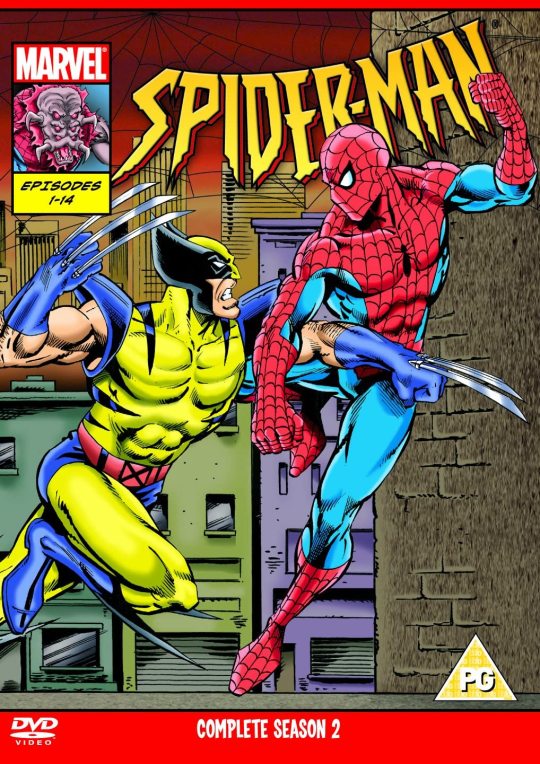
Spider-Man: Lifeline #1-3
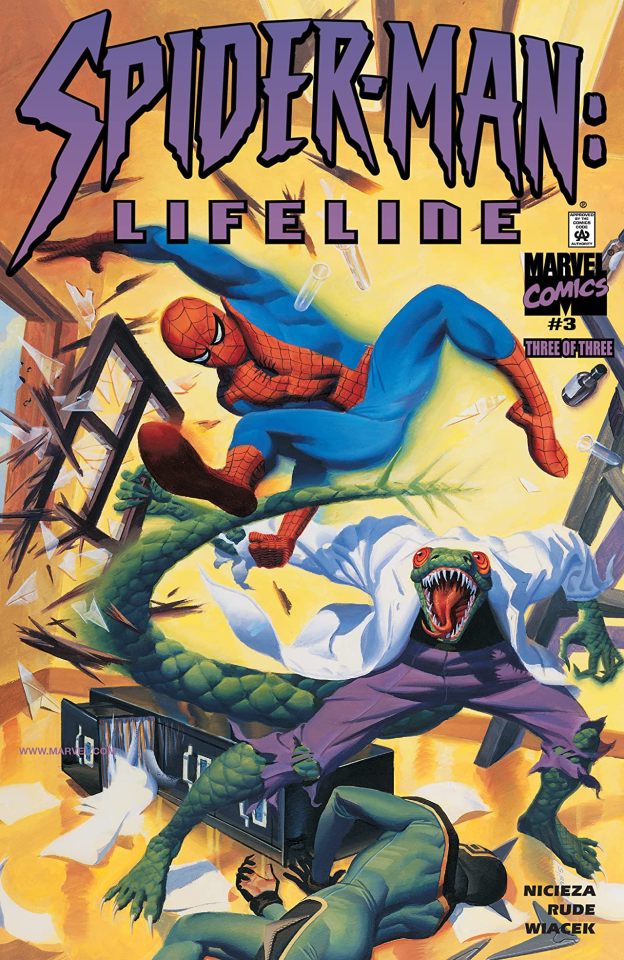
This was the first true sequel to the original Tablet storyline. If read immediately after it’s predecessor it might come off as a bit flat and samey. This is due to the writer and artist team deliberately trying to evoke the 1960s style of the original storyline, although the story is firmly set in the (then) modern day. If read in the context of the times the story is a fun throwback that deftly recreates a bygone era and organically expands upon the original story even whilst it homages it.
However, for better or worse it is also the story that rendered the tablet an explicitly mystical item possessing potentially cosmic power. A lot of Spider-Man fans are turned off by anything too mystical. Usually I am too but for me personally the fun of this story is how successfully a 21st century story recaptures the 1960s, complete with witty Spidey one-liners.
The mini-series was collected several years ago alongside the original 1960s storyline.
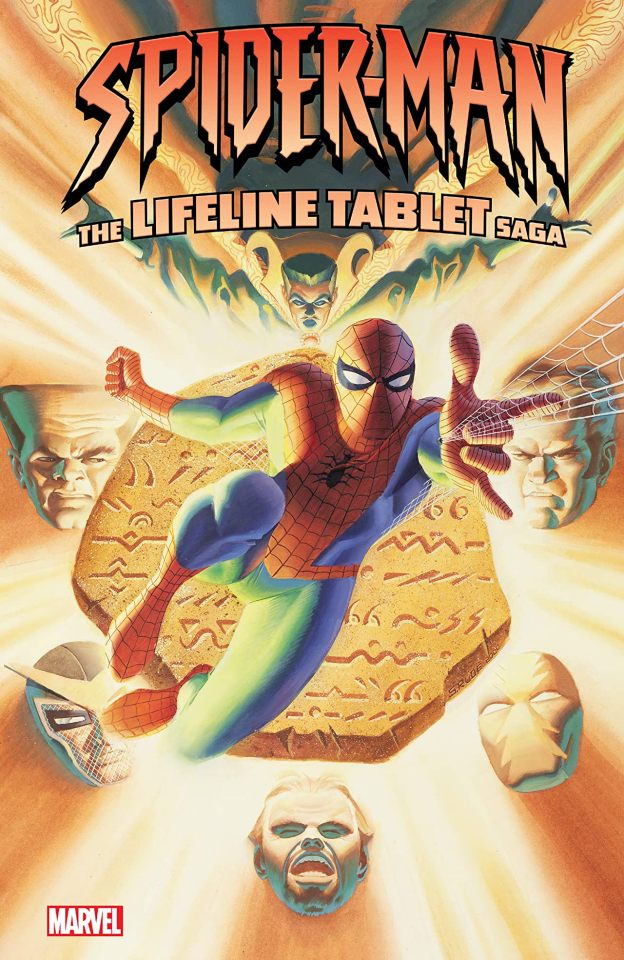
Spider-Man: Forever Young

This Y.A. novel from 2017 is a curious novelty.
For about the first half of the novel it adapts the original story and does so fairly faithfully. This isn’t a case of being ‘spiritually faithful’ like the 1994 cartoon. I’d argue the vast majority of the dialogue used is word-for-word identical to Stan Lee’s and the narration describes practically the exact actions of the fight scenes from the 60s comics. Granted there are some changes and omissions. Quicksilver and the Shocker are noticeably absent whilst the Schemer/Richard Fisk is incorporated from a later Lee story. But overall it is like 90% faithful.
Which is extra remarkable considering it goes to the effort of updating the setting to modern times. So you have characters speaking dialogue and displaying attitudes faithful to a 60s comic book but they also have cel phones and other modern technology. This becomes especially odd when the author has to essentially update a discussion about the Civil Rights movement of the 1960s.
The biggest swerve of the novel is that it doesn’t end when it finishes adapting the original story. Rather the back-half goes on to tell an entirely original story that is built upon the foundation of the original and even incorporates some minor elements from the Lifeline mini-series.
If you don’t want to read the whole book, GraphicAudio produced an abridged audio version of it that’s currently available on Audible.

FCBD 2018, ASM v5 #1, 6-7, 26-28, 41-43

The latest installments in the Tablet’s saga is difficult to categorize because it has transpired as an off and on subplot within the current Nick Spencer run of ASM. The above are merely the issues I feel are most relevant to said subplot thus far.
I won’t comment on this storyline for now as it’s still brewing. Similarly, whilst I’m sure it will be collected again in the future, as of this writing these are the trades available to read the story so far.

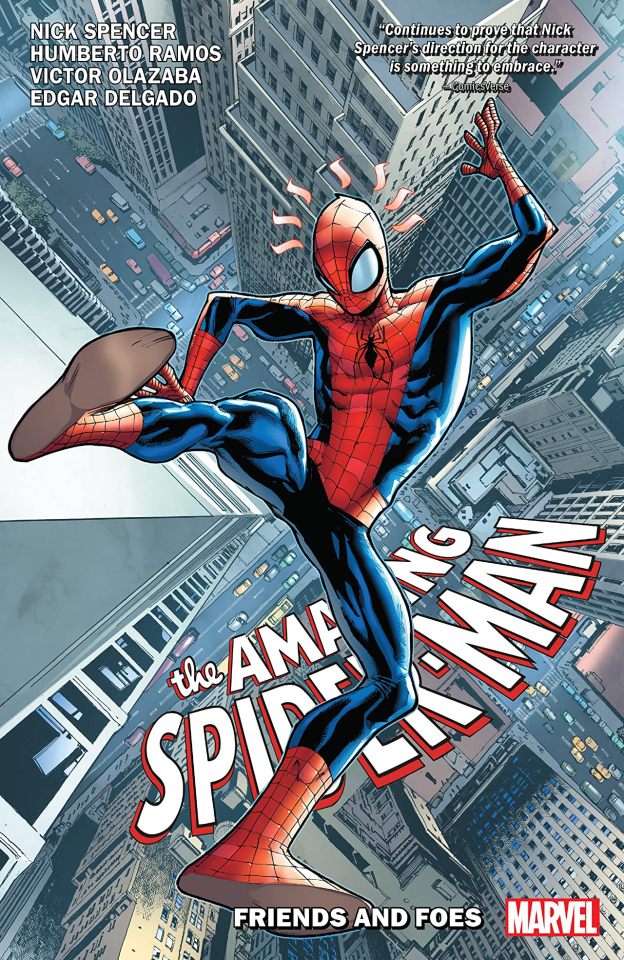

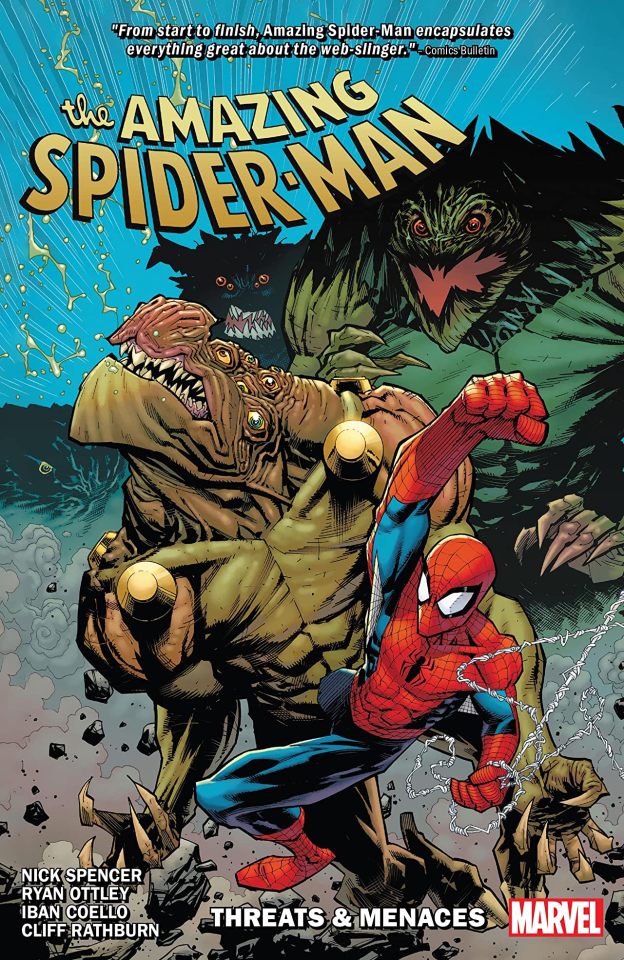
#Spider-Man#Peter Parker#Kingpin#the kingpin#wilson Fisk#Silvermane#boomerang#Fred Myers#Hammerhead#Stan Lee#Spider-Man the Animated Series#Spider-Man 1994#Spider-Man 1994 cartoon#Marvel Animation#the Lizard#lizard#Curt Connors#Lists
21 notes
·
View notes
Text
Sinner’s Holiday: An Ode to Pre-Code

Once upon a time, Hollywood movies showed us Spencer Tracy skinny-dipping with Loretta Young, Barbara Stanwyck ducking into the ladies’ room with her boss in exchange for a promotion, and chorus girls warbling hosannas to marijuana.1 This, of course, was pre-Code: shorthand for the era of Hollywood movie-making between the advent of sound in 1929 and the ascendance of Hays Office censorship in 1934. The term is in fact a misnomer. The Production Code was written and officially adopted in 1930, but for the next four years, like Prohibition, it was flouted with near impunity. A look at a representative film of the time provides ample evidence of the Code’s impotence. Take Night Nurse (Wellman, 1931), starring Barbara Stanwyck: a fast, tough, sleazy and thoroughly enjoyable tale of a nurse who uncovers a plot to murder the children in her care for their trust funds.
The Code proclaimed that Undressing scenes should be avoided, and never used save where essential to the plot. Stanwyck and her roommate, played by Joan Blondell, often speak their lines while casually changing their clothes in front of the camera. An intern who walks in on Stanwyck in her scanties assures her, “You can’t show me a thing. I just came from the delivery room.” The Code said, The use of liquor in American life…shall not be shown. The mother of Stanwyck’s charges, who is never seen in any other state than blotto, boasts, “I’m a dipshomaniac—and I like it!” Stanwyck befriends an amiable bootlegger when she treats his bullet-wound and agrees not to report it, contrary to law. In gratitude, he sends her a bottle of rye. “But you’re not allowed to drink,” a square nurse objects. “No,” Blondell cracks, “But it’s swell for cleaning teeth.” Adultery and profanity are both proscribed by the Code. The dipsomaniac is plainly carrying on a tawdry affair with her chauffeur, Nick (Clark Gable), and at one point Stanwyck, disgusted to find her passed out while her children are on the brink of death, rebukes her with, “You mother.” The Code said, Methods of crimes should not be explicitly presented. When sent out to get milk for the sick children, the amiable bootlegger breaks into a grocery store. As for Revenge in modern times shall not be shown, the movie ends with the bootlegger arranging for Nick to be “taken for a ride.” Did I forget to mention that Apparent cruelty to children or animals, the central trope of the plot, is also forbidden by the Code? Or that Gable socks Stanwyck on the jaw, or that Stanwyck gets her job by flashing her ankles at a doctor?
Code? What Code?
The appeal of pre-Code movies lies not in sex, violence or vulgarity (there’s more than enough of those in the infinitely more explicit cinema of the last forty years) but in their attitude, which conveyed the pessimism and irreverence of their time. Radical cultural changes in the wake of World War I, the farce of Prohibition, the 1929 stock-market crash and the Great Depression combined to create a pervasive disillusionment and loss of respect for authority and traditional values. With rapid changes in fashion and technology, violent upheavals in economic and political conditions, society was wide open, hectically elated in the twenties, confused and frightened in the thirties. For a few years the lack of rigorous censorship allowed movies to channel the mood of the country and to capture society warts and all. They depicted adultery, divorce, rape, prostitution and homosexuality; bluntly portrayed alcoholism and drug addiction, glorified gangsters, con artists and fallen women. With a distinctive blend of cynicism and exuberance, they offered escapist entertainment but also bitter and sometimes radical visions of a society on the verge of breakdown. Oscar Levant famously quipped that he he knew Doris Day before she was a virgin; Hollywood too was grown up before it was innocent.

The Con Man as Comic Hero: Blonde Crazy
During the silent era, censorship of films was piecemeal. Not only states but individual towns had boards of censors who screened movies and ordered cuts of shots or scenes they considered too racy. Projectionists simply snipped out the offending material, a practice that accounts in part for the incompleteness many surviving films from the twenties.2 In the early twenties, Hollywood was hit with a string of off-screen scandals, culminating in the trial of comedian Roscoe Arbuckle on charges of rape and manslaughter. The movie moguls, terrified that bad press would scare away audiences, invited Will Hays to become the guardian and public face of Hollywood’s morals. Hays, a Presbyterian elder and former postmaster general, became director of the Motion Picture Producers and Distributors Association. He was an ideal choice to project a more wholesome image of Hollywood, but as a censor he proved ineffectual, and movies continued to be attacked for their evil influence on the country’s moral fiber.
Silent movies contained many elements that would not be seen during the Code era, including nudity, drug use and comic vulgarity. But the absence of sound gave film a degree of unreality that lent itself to fantasies like Valentino as an Arab sheik and Douglas Fairbanks riding a flying carpet, as well as to timeless moral fables like Sunrise: a Song of Two Humans, whose characters are called simply The Man and His Wife. From Mary Pickford as a spunky urchin to Harold Lloyd as a college freshman, actors frequently played much younger and more naive than they were in real life. Even the flapper films of Clara Bow and Joan Crawford, which purported to expose the shocking mores of modern youth, presented their heroines as pure though misunderstood. With the change to talkies, the silent era’s swashbuckling heroes, Great Lovers, ringleted sweethearts and carefree flappers suddenly seemed antiquated. Sound punctured fantasy and brought movies down to earth and up to date: never again would they soar to the heights of romance they had reached in silence.

The coming of sound involved a complete reinvention of movies, amounting to the development of a new medium. The fluid spectacles of the silent screen gave way to small-scale films confined by the technical limitations of early sound recording technology to interiors and studio sets. The bulk of films from 1929 and ’30 are clunky and static, with stilted dialogue and acting. When talkies hit their stride in the early thirties it was with urban settings that could be recreated on studio backlots and zingy vernacular dialogue delivered at machine-gun pace by Brooklyn-bred voices. As the old screen gods faded, snappy young urbanites like James Cagney and Joan Blondell entranced audiences with their unaffected style and wised-up attitude.3 This new earthiness brought the censorship issue to a crisis; everyone agreed that movies were going “from bad to voice.” In 1930, still hoping to render external censorship unnecessary through self-regulation, the studio moguls officially adopted the Production Code, written largely by a Jesuit priest named Daniel Lord (hence it should, aptly, be known as the Lord’s Code rather than the Hays Code.) But this effort coincided with the onset of the Depression, when the movie studios were struggling like other businesses. Desperate to lure audiences back to theaters they defied the Code to create daringly risqué entertainment, treating the list of “Don’ts and Be Carefuls” as a list of “Do’s.”
The kick in pre-Code movies comes from the awareness shared by the actors and filmmakers that they are pushing the limits, getting away with something. Since today’s films must work so hard to raise an eyebrow, they can never recapture the harmless fizz of Maurice Chevalier taking Jeannette MacDonald’s measurements in Love Me Tonight, or Jean Harlow slipping a portrait of her boss into her garter in Red-Headed Woman, or Miriam Hopkins and Herbert Marshall in Trouble in Paradise picking each other’s pockets over the course of a romantic meal. (“I trust I may keep your garter?”)
There was a Code, after all, and movies were never completely uncensored. Because they couldn’t get away with explicitness or profanity, pre-Code movies specialized in innuendo. A line that would register with sophisticated adults but fly over the heads of children or more naïve viewers was considered ideal; it would protect the innocent while enticing the experienced. In The Half-naked Truth, a scheming promoter played by Lee Tracy checks into a fancy hotel with a Mexican carnival dancer he is passing off as a Turkish princess. Also with them is rotund Eugene Pallette, wearing a turban. The hotel clerk looks at the register Tracy has filled out and does a double take at Pallette. “Oh, they have them in all Turkish harems,” Tracy says, adding confidentially, “He’s very sensitive about it.” The joke is carried through the movie without a word being spoken that could bring a blush to the most prudish cheek. Pre-Code wasn’t always this artful—there’s nothing subtle about Dick Powell singing “I’m Young and Healthy” in a tunnel of chorus girls’ legs, or Tarzan and Jane romping around the jungle in loin cloths—but in general the naughtiness was low-key, not flaunted but there to be discovered by the alert viewer.
Movies offered vacations from reality in sleek art deco style: gleaming penthouses with twinkling views of Manhattan, shimmering bias-cut evening gowns and shiny top hats, buoyant jazz scores and intoxicated gaiety. Beyond mere escapism, there’s a loopy, zany, surreal streak in pre-Code that flourishes in the early Marx Brothers and W.C. Fields films, in Busby Berkeley musicals with their kaleidoscopes of semi-nude chorines and in the cartoons of the Fleischer Brothers, where Cab Calloway lends his voice to a ghostly dancing walrus singing “The St. James Infirmary Blues.” There’s a dizzy feeling, as if the whole of society, like Jack Lemmon in Some Like it Hot, had an empty stomach and it went to their heads.
Maybe it was the effect of hearing so often that prosperity was just around the corner while the country sank deeper and deeper into despair. Demented optimism was parodied—or endorsed; it’s hard to tell—in a bizarre cartoon short from Columbia Studios called Prosperity Blues. A world of wretched, baggy-eyed, trembling sufferers, of cobweb-infested banks and pitiful apple-peddlers, is transformed into a fascistic spectacle of crazed cheerfulness as the hero, to the tune of “Happy Days Are Here Again” slaps disembodied grins on people’s faces with the command “Smile, darn ya, smile!”
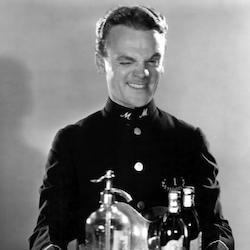
“The age of chivalry is over,” James Cagney declares in Blonde Crazy (Del Ruth, 1931). “This, honey, is the age of chiselry.” Tough yet ebullient, Cagney personifies the essential pre-Code flavor of hard-boiled high spirits, sarcastically knowing and gleefully amoral, but not sour or misanthropic. Like nightclub owner Texas Guinan who greeted her customers with a hearty, “Hello, suckers!” the con artist hero of Blonde Crazy seems high on his own cynicism. Or maybe punch-drunk: you need a score card to keep track of how many times Joan Blondell slaps him, and he keeps coming back for more.
The films of Hollywood’s classical period are tight, smooth, polished. The scripts, dialogue, acting, lighting and art direction all gleam with controlled craftsmanship. Blonde Crazy, by contrast, skates on the verge of chaos: the actors seem to be winging it, cutting loose, seeing how far they can go. Cagney revels in this freedom, indulging in outrageous vocal mannerisms, flaunting his virtuosic control of his body as he darts and weaves through the role like a boxer in the ring, going from crafty schemer to world-class chump, wise-cracking operator to heart-broken lover. The anarchic, free-wheeling atmosphere of pre-Code, mined with slapstick and doubles entendres, often leaves modern audiences incredulous. Did I really hear that? Did they really mean...?
Like Night Nurse, Blonde Crazy methodically defies the Code. Undressing scenes? Cagney walks in on Blondell in the tub and appreciatively examines her underwear, doing a little shimmy with her panties, playfully holding her bra over his eyes like a pair of goggles. Liquor in American life? In an early scene Cagney, a bell-hop in an anything-goes hotel, peddles bootleg booze to a traveling salesman (Guy Kibbee). Adultery? Cagney and Blondell’s first con involves setting up the same salesman: caught “parking” with Blondell and a bottle of hooch, he offers a hefty bribe to the “cop” who’s actually their accomplice. Methods of crimes? The depiction of the movie’s confidence tricks, including a daringly simple ploy by which Cagney lifts a diamond bracelet from a jewelry store, is so detailed the viewer could easily copy them. Revenge in modern times? The movie lovingly details the means by which Blondell succeeds in fleecing a fellow con man who previously fleeced Cagney.
One scene is set in an elegant hotel lobby where men discuss the races while women share their plans to blackmail men with love letters. Every single person here is on the make. “Everyone has larceny in his heart,” Bert (Cagney) explains to Ann (Blondell) when he asks her to join him in the rackets. She’s reluctant, but only because she’s afraid of getting caught and sent to jail. Still, as the movie’s only hint of a conscience, she objects to out-and-out thievery and feistily protects her virtue. Bert keeps making passes at her and she keeps slapping his face, without harming their affectionate partnership. But the pair’s toughness keeps them from admitting the depths of their feelings. “I’ve wanted you ever since I saw you,” he tells her earnestly, then shrugs dismissively, “But if I can’t have you I’ll have someone else.” Still, by the time Ann tells him she’s marrying another man, your heart bleeds for Bert, the chiseler with the wandering eye. The other man is Joe Reynolds (Ray Milland) who chivalrously takes a cinder out of her eye and sends her a book of Browning (the poet, not the automatic, as Philip Marlowe would say.) She tells Bert that she’s going to marry Reynolds because he and his family know “a better way to live.” They care for “music and art and that kind of thing.” Of course he turns out to be the biggest louse of all, stealing from his firm and exploiting Bert’s devotion to Ann to make him the patsy. Bert winds up in jail and shot full of holes, but at least Ann finally admits her love and promises to wait for him.
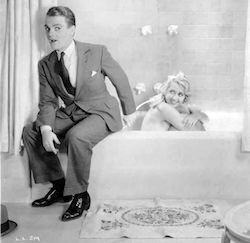
Joan Blondell was the best love interest Cagney ever had. More than able to stand up to him, she brings out an unexpectedly tender and sexy side of his cocky, wound-up persona. With her wide-eyed, appetizing looks, Blondell has a warm, open front but an inner reserve and caution. Like her fellow Brooklynite Barbara Stanwyck, she was born wised-up. Cagney too, for all his extroverted energy, has a core that is aloof, introverted, nervously intense. It is touching to see these two wary, skeptical souls embrace each other so openly. They have good reason to be wary; only suckers trust anyone in the world of Blonde Crazy. Con artists con fellow con artists, and “respectable” citizens lack basic decency. Near the end of the movie, another con man tries to interest Bert in a ploy that involves tricking the relatives of the recently deceased into paying for good luck charms that the dead supposedly ordered just before “kicking off.” Anyone stupid or trusting enough to be conned deserves to lose his money. Life is a continuous game of one-upmanship, a contest to see who can laugh last.
In Guys and Dolls, Sky Masterson explains that among his people, “to be marked as a chump is like losing your citizenship.” During the early thirties, audiences who felt like victims of an economic swindle reveled in the exploits of sharpies, shysters, smart guys who know all the angles and who outwit hypocritical representatives of wealth, authority, respectability. Cagney played more con men than gangsters: in Jimmy the Gent, as “the greatest chiseler since Michelangelo,” he asserts, “There’s only two kinds of guys in business, the ones that get caught and the ones that don’t get caught.” But for all his street smarts, Cagney has moments of child-like naivité. “The consummate urban provincial,” as Andrew Sarris called him, Cagney is irrepressible rather than unflappable. His driving energy, self-mocking humor, hot temper and sentimental streak expressed the pre-Code mood—fast-paced, excitable, hustling for a buck—as Bogart’s world-weary postwar cool expressed the mood of noir.
Later in the thirties, Frank Capra would glorify his own version of the sucker: in his films Gary Cooper and Jimmy Stewart embody the soul of America as innocent, optimistic, easily fooled. Smart cookies like Stanwyck and Jean Arthur would crumble in the face of such purity, renouncing their hardened attitude and determination to get ahead by any means necessary. Even pre-Code movies often bow, sometimes wistfully and sometimes perfunctorily, towards the old-fashioned virtues. Chivalry makes a come-back in the final scene of Blonde Crazy, one of the few genuinely romantic moments in Cagney’s career as he gazes up at Blondell with shining, worshipful eyes. Bert has demonstrated that love can turn a crooked guy into a knight in shining armor. But he’s got a prison stretch ahead of him, and then—what? Will he go straight, get a job? It’s hard to feel any great confidence in his future, since the lasting impression left by the film is that the cornerstone of American society is the confidence trick.

“The End of America”: Heroes for Sale
The pre-Code years corresponded to the nadir of the Great Depression, when disgust with Herbert Hoover’s government deepened the country’s black mood, when the homeless called their shanty-towns “Hoovervilles” and the newspapers they wrapped themselves in “Hoover blankets.” Law-abiding citizens made folk heroes out of bank robbers like Dillinger and Bonnie and Clyde, while hoboes sang of a utopia where “all the cops have wooden legs” and “the railroad bulls are blind.” The “bulls” were notorious for beating the hoboes they caught, shooting at them or forcing them to jump from speeding trains; even young teenagers weren’t spared. Being broke, jobless and homeless was treated not as a misfortune but as a crime. In the South, many towns used transients as slave labor: arrested on freight trains or in rail yards, they were put to work on chain gangs, and when their sentences were up, put back on the trains they’d been arrested for riding and told to get out of town. Communities posted signs, “Jobless men keep going—we can’t take care of our own.” Some towns denied medical care to travelers who fell ill or were injured, simply dumping them outside the city limits. Before the 1932 election of Franklin D. Roosevelt, many people felt the country was drifting towards anarchy or revolution.
Not all movies of the time were escapist fantasies; many pre-Code films were “ripped from the headlines.” Warner Brothers even confronted the Depression in a musical, Golddiggers of 1933. The opening number, “We’re In the Money,” is pure wish-fulfillment, as chorus girls wearing only strategically placed gold coins crow that “Old Man Depression” is through and that, “We never see a headline about a breadline today.” This giddy fantasy shatters when it is revealed to be a rehearsal for a show that has to close down because the producers can’t pay rent for the theater. Soon the chorus girls are staying in bed all day (three to a bed) because they have nothing to eat. The plot invites us to enjoy watching Joan Blondell earn money the easy way again, squeezing it out of a man who is rich, self-righteous and not very bright. Golddiggers is fluff, but it concludes with a musical number that makes a powerful if disconcerting stab at social realism.
This is social realism à la Busby Berkeley, so Blondell dons a black satin dress and stands under a lamppost, suggesting that unless the government helps jobless men their wives will be reduced to peddling themselves in the street. “Remember my forgotten man,” she sings, “You put a rifle in his hand / You sent him far away / You shouted hip hooray / But look at him today…”4 The song is taken up by a black woman sitting in an open window, surrounded by other women posed to look like F.S.A. portraits: a gaunt and worried farm wife, a starved and empty-eyed grandmother. Meanwhile endless lines of men are seen marching off to war, stumbling through the muddy trenches, then shuffling along in breadlines. This was torn from some very fresh headlines: in the summer of 1932 thousands of World War I veterans, known as the Bonus Army, had camped out on the Mall in Washington, D.C., asking the government to pay them the financial bonuses they were promised for their war service in advance, since many of them were unemployed and destitute. The army under Gen. Douglas MacArthur violently dispersed the men and their families, inspiring outrage. In this frivolous Hollywood musical, Blondell confronts a policeman who is rousting a bum out of a doorway, pointing to the military medal pinned to the inside of the man’s shabby lapel. Her eyes burn with pure hatred for the cop.
In these desperate times, both socialism and fascism were touted as viable alternatives to America’s problems. Several Hollywood movies offered glowing visions of benevolent totalitarianism: in Gabriel Over the White House, produced by William Randolph Hearst in 1932, Walter Huston plays a president who seizes dictatorial powers for the good of the country and proceeds to get rid of gangsters by trying them in military courts without constitutional protections. (Sound familiar?) In The Mayor of Hell, the boys in an ethnically diverse and racially integrated reform school are offered the chance to run the place as a children’s democracy, and when a tyrannical director tries to destroy this system, they try him in a kangaroo court complete with flaming torches.
The government’s helplessness or callousness in the face of economic crisis was not the only source of disenchantment with authority. The prohibition of alcohol, enacted in 1920, turned the vast majority of Americans into criminals, law enforcement into hypocrites, and bootlegging gangsters into society’s pets. Meanwhile, in the late 1920s the lingering wounds of the Great War, initially suppressed by a generation desperate to forget, resurfaced as people began to take stock of what they now viewed as a ghastly waste of life. Pacifism was widely embraced; in 1933 the hallowed Oxford University Student Union debated and passed the statement, “That this House will in no circumstances fight for its king and country.” Movies like All Quiet on the Western Front and The Last Flight expressed horror at the costs and pointlessness of the war, while others called attention to the plight of veterans struggling to survive in the country for which they had fought.
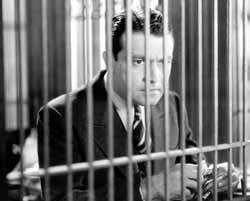
Heroes for Sale (Wellman, 1933) is one of the bleakest films to come out of Hollywood during the studio era. What the confidence trick is in Blonde Crazy, gross injustice is in Heroes for Sale: the basic building block of American society. Richard Barthelmess plays the American everyman as Job, afflicted not by mere bad luck but by unfairness, misunderstanding and the heartlessness of the powerful. In the teens and twenties, Barthelmess had played pure-hearted farm boys in silent melodramas like Way Down East and Tol’able David; he stood for integrity, trustworthiness and boyish optimism. By 1933, his fresh handsome face looked tired and worn, prematurely defeated even at the start of the movie, when he supposed to be just 25. The story begins in the trenches during the War, and the first thing we see is an officer issuing a command for a raid intended to gain prestige by capturing a German officer. When a subordinate objects that the plan will amount to suicide, he snaps, “Suicide or not, it’s orders,” and tells the other officer to take nine or ten men, because “that’s all I can afford to lose.” This kind of callous abuse of power will recur throughout the film, until the penultimate scene in which armed policemen drive homeless men from their shelter into the rain, ignoring the plea that they are not bums but veterans.
Tom Holmes (Barthelmess) is one of the nine or ten expendables chosen for the mission, and when his superior officer turns yellow and refuses to leave the shell-hole where they are hiding, he single-handedly knocks out a machine-gun nest and captures a German officer, only to be wounded and left for dead on his way back. His own officer, Roger, takes credit for the escapade and wins the Distinguished Service Cross, while Tom is taken to a German hospital where he is treated humanely but given morphine to ease the pain of shell-fragments in his spinal column, starting him on the road to addiction. Back home, he winds up working in the bank owned by Roger’s father, who self-righteously fires him when he learns of his drug problem. Roger is a weak, nervous, sweaty-palmed villain; he feels bad about stealing Tom’s glory and allowing him to suffer unfairly, just not bad enough to do anything about it.
For a while things look up for Tom. In Chicago he falls in with a friendly father and daughter who run a café, gets a good job at a laundry, and marries a beautiful young woman (Loretta Young). But as soon as he reaches higher he is shot down. He agrees to help promote a friend’s invention to mechanize the laundry, but when his benevolent boss dies, the new owners use the machine as an excuse to fire all their workers. The workers blame Tom and start a riot, in which his wife is accidentally killed. As if that weren’t enough, he is blamed for leading the riot he was trying to stop and sentenced to five years hard labor. When he gets out, he’s still marked as a “Red” and driven out of town by government agents. By now the country is in the grip of the Depression, and he joins the army of hoboes riding the rails. Achieving secular sainthood, Tom gives away the fortune he earned from the laundry machine to fund a soup kitchen. And when he finally encounters Roger again, also on the bum after serving jail time for embezzling, Tom counters Roger’s pessimism (“The country can’t go on this way. This is the end of America”) with a pat speech about how the country isn’t licked and will rise again, just like Roosevelt said in his inaugural speech. Angry and anguished throughout much of the film, by the end he has slipped into a kind of haloed masochism. Despite his clichéd words, what he embodies is not can-do optimism but the kind of enlightened detachment that comes from having nothing more to lose.
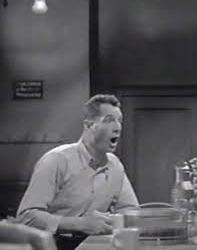
“The only thing that matters is money. Without it you are garbage. With it you are a king.” These words are spoken by Max, the German inventor who makes Tom rich and indirectly ruins his life. Max is a ludicrous stereotype, starting out as a ranting communist and abruptly turning into a greedy plutocrat (when someone points out that he used to hate capitalists he responds, “Of course—because I had no money then!”) In its one idyllic interlude, the film shows a workplace where capital and labor cooperate in smiling harmony and the boss is even willing to use mechanization to give employees more leisure and easier jobs without cutting the workforce or lowering salaries. This utopian fantasy, along with the café whose owners give to the poor even as they struggle to survive, suggest that the only solution to the country’s problems is selfless generosity. Unfortunately, the movie also implies that heartlessness and blinkered malice are far more common.
Heroes for Sale is not a lucid analysis of economic problems, and despite a gritty atmosphere it lacks the objectivity of neo-realism. At once bitter and sentimental, it portrays the whole of American society as a “you-must-pay-the-rent-I-can’t-pay-the-rent” melodrama, with villains as vile and heroes as pure as those in a D.W. Griffith tale of wronged innocence. Many pre-Code movies invite the viewer to identify with and root for people who cheat to get ahead: gangsters, con artists, gold-diggers. Heroes for Sale instead asks us to identify with an innocent and virtuous but hapless and often helpless hero. If people fantasized about being one of Cagney’s confident, cynical operators—predators rather than prey—they saw themselves as Tom Holmes: down on their luck, taking one hit after another, but struggling on and clinging to hope.

Wellman’s next film was Wild Boys of the Road, his famous portrait of teenage hoboes, which grinds through hardship and injustice only to veer into shining idealism in the last five minutes. Two middle-class high-school boys turn into ragged panhandlers, one a cripple, the other stooping occasionally to petty theft. A crowd of vagrants bands together to attack and kill a brakeman who has raped a teenage girl, and to fight off the “bulls” who try to put them off a freight train. It’s easy to imagine audiences cheering as the young bums pelt the cops with eggs and fruit, and booing when the cops use fire hoses to drive them from the shanty-town they have built in disused sewer pipes. The hobo community is painted as loyal, diverse and supportive (blacks and girls are treated as equals), but no one is having any fun. They’re not wild, just bone-weary. The protagonists wind up in New York, living in a garbage dump, and one is tricked into taking part in an attempted robbery. But when they are hauled before a judge, instead of coldly meting out injustice like the judge in Heroes for Sale, the kindly man lectures the youths on how things are going to be better now, they will get a fresh chance, as the camera pans up to the National Reconstruction Administration poster above his head (“We Do Our Part”). The ending looks like a cop-out now, but audiences of the time probably cheered it too.
The pre-Code era was vanquished not only by stricter censorship but by the mood swing following Roosevelt’s inauguration, when the desperate country embraced the promise of a “new deal for the American people.” Pictures of FDR went up next to icons of Jesus; at the end of Footlight Parade, another Warner Brothers musical, solders marching in formation create an American flag, the president’s face, and the NRA eagle. Roosevelt campaigned to the tune of “Happy Days are Here Again,” and one of his first actions in office was to repeal Prohibition. The New Deal failed to end the Depression but it did stop the free-fall of the country’s spirits, ending the sense that the people had been abandoned by their leaders. Hollywood diligently promoted the new tone of wholesome optimism, strictly punishing vice and rewarding virtue. But can you regain innocence once you’ve lost it?

The Age of Experience: Baby Face
Pre-Code movies finally went too far. The last straw may have been the lesbian “dance of the naked moon” in The Sign of the Cross, Miriam Hopkins getting raped in a barn in The Story of Temple Drake, or Mae West just being Mae West. America was divided then as now, and the backlash that ushered in the Code crackdown was driven in part by heartland resentment of movies pitched at sophisticated urban audiences. 5 Outraged by the increasingly salacious tone of Hollywood, in 1934 the Catholic Church formed the Legion of Decency and ordered its congregations to boycott the movies it condemned. In fact, box office receipts rose for movies that were banned by the Legion, but Hollywood’s producers panicked at the prospect of shrinking audiences; of being attacked as foreign corrupters of America’s youth, since most were Jewish immigrants; and of federal government intervention. They capitulated. After 1934, the studios could no longer flout the Production Code Administration and its viciously anti-Semitic head, Joe Breen; unless movies earned its seal of approval they would be blackballed. For a few years filmmakers fought hard against the Code6, but as ticket sales rose with the easing of the Depression, they settled into acceptance of its strictures. For the next twenty years married couples would sleep in twin beds and no couple would kiss for longer than three seconds. The most damaging aspect of the Code was not that it limited what could be shown, but that it forced movies to uphold conservative values, to show respect for authority and religion, and to present a simple dichotomy of good and evil, virtue and sin. The censors did not want controversial subjects like abortion, prostitution or racial tensions discussed from any angle, no matter how morally serious. Hollywood managed to produce great movies under the Code’s restrictions, but sometimes its stifling effect gave them a sterile, airless, homogenized quality.
Some of the pre-Code spirit survived in screwball comedy, a genre created by the Code—the sexes must battle lest they wind up in bed. Even at the height of the Code, Preston Sturges and Billy Wilder consistently subverted its precepts, probably because their dialogue was too clever or just too audaciously dirty for the censors to decipher. After World War II the hard-boiled, wised-up attitude went underground, flourishing in film noir, but what became of the pre-Code sensibility after the end of the noir cycle? Our own time may be rife with irony and black comedy, but sneaky innuendo can’t thrive without restrictions, and all-pervasive, indiscriminate irony becomes shallow and facile. The gritty, sassy tone of pre-Code flourished precisely because it still had the power to shock.
The proponents of censorship cited the overwhelming power and mass appeal of movies, which made them particularly dangerous to the young. And after all movies were not art, so they couldn’t claim first-amendment protection as books or plays might: one journalist wrote in 1934 that no “classic” movie had been created yet. Hollywood’s producers were all too ready to agree, viewing their creations only as commercial products. Even pre-Code films weren’t safe from retroactive censorship. Those that were re-released during the Code years or the early years of television had bits cut out: Myrna Loy trilling “Mimi” in a sheer nightgown in Love Me Tonight, Edward Woods tussling in bed with Joan Blondell in Public Enemy. Ironically, films that were considered too thoroughly offensive to be salvaged remained intact. In 2004 a complete, uncensored print of Baby Face, perhaps the crown jewel of pre-Code, was discovered at the Library of Congress. Baby Face (Green, 1933) was so sordid that it was rejected outright by state censorship boards and heavily altered before being released, but a copy of the original camera negative showed the film as only censors had ever seen it.
Sold-out crowds packed New York’s Film Forum on a snowy Monday in January 2005 to be the first audience ever to watch Barbara Stanwyck smash a beer bottle over the head of a man molesting her, then lie down in the straw with a brakeman in return for a free ride on a freight train; to hear a sinister German cobbler quote Nietszche to Stanwyck and advise her to stamp out all emotion and use her power over men to get the things she wants. A New York Times piece on the rediscovered print stated that “you couldn’t make this film today.” Baby Face’s heroine, Lily Powers, is sexy and heartless, with a hidden, wounded fury built up during a lifetime of mistreatment. Accompanied by a growling rendition of “The St. Louis Blues,” she climbs a ladder of weak and venal men from a dreary steel-town speakeasy to the inevitable Manhattan penthouse. With her all the way is the only person she really cares for, her black maid and best friend, played by the beautiful Teresa Harris. Baby Face has all the kick, the style, the shocking laughs and underlying bleakness that exemplify pre-Code.
During the Depression, with so many men unable to support families, women became responsible for their own and their children’s survival as they had rarely been before. Many pre-Code movies focus on the predicament of women looking for ways to support themselves outside of marriage. While the flappers of the 1920s were young girls sowing their wild oats, the women of pre-Code are looking for security, and they aren’t too scrupulous about how they get it. They are neither virtuous helpmeets nor destructive vamps; they are adults who have faced some cold, hard facts. Actresses like Constance Bennett and Miriam Hopkins played a new kind of woman who was hardened, experienced, far from spotless, but who instead of paying for her sins usually triumphed in the end.
World War I shattered the traditional manly and womanly ideals of the nineteenth century; World War II brought back the celebration of the he-man and the homemaker. Between the wars there was a blurring and mingling of the sexes. Women bobbed their hair, smoked and drove cars; men got manicures, sang falsetto and danced the Charleston. A novelty song of the time complained: “Masculine women, feminine men / Which is the rooster, which is the hen? / It’s hard to tell ‘em apart these days.” Homosexuality was an object of sniggering fascination, and caricatures of effeminate men and butch women show up regularly in pre-Code movies. In Ladies They Talk About, a new inmate in a women’s prison is warned about a hefty cigar-smoking lady in a monocle: “Watch out for her, she likes to wrestle.” In Wonder Bar, a fey young man cuts in on a dancing couple and dances off—with the man. “Boys will be boys!” Al Jolson comments with a swishy gesture.
In the Victorian era, Europe and America embraced the ideal of woman as untouched by experience, the “angel of the house.” One of the arguments against granting women the vote or allowing them to enter universities and the work-place was that if they left the domestic sphere they would lose their purity and moral authority. The working women of thirties Hollywood triumphantly backed this argument: they are hard-nosed, pragmatic, independent. The “double standard” for pre- and extra-marital sex was a common theme in films of the early thirties: why shouldn’t women act like men? The feisty yet vulnerable pre-Code woman was more compromised than the fast-talking dame of later screwball comedies, who usually worked as a reporter or secretary and relished her self-sufficiency. One aspect of pre-Code movies that might actually shock contemporary audiences is the ubiquitous equation of sex and money. It’s taken for granted that women will sell themselves for furs, jewels and apartments, as “kept women” or free-lance party girls. This reflects the Depression too, a time when—so the movies warned—the scarcity of honest jobs might tempt girls to take “the easiest way.” Men, meanwhile, might turn to crime, bootlegging, gangs: selling their souls for flashy suits, cars and women. Unlike their female counterparts, the fallen men always pay, dying in the gutter or going to the chair. Women who break commandments—even a hard-bitten ex-felon like Constance Bennett in Bed of Roses—can be redeemed through the love of an honest man, in this case the poor but hunky Joel McCrea.
The thirties were a golden age for women in Hollywood movies, the only decade when they were regularly allowed to be smart, competent, funny and sexy all at once, and seldom required to be tamed or put in their place by men (Female is a dispiriting exception.) Throughout the decade, women continued to embody the toughness and cynicism of the Depression years in romantic comedies, where they were habitually both more dazzling and more down-to-earth than their male counterparts. The experienced woman paired with a naïve, virginal man is partly a comic reversal of a more traditional trope, Little Red Riding Hood and the Big Bad Wolf. But while these women take economic advantage of their male prey, they are also seduced by male innocence. They yearn for what they themselves have lost.
The uncensored version of Baby Face makes it clear that Lily was forced into prostitution by her own father when she was fourteen. Hence the cruel irony of the title: while she poses as girlishly helpless (“Nothing like this has ever happened to me,” she pleads when she’s caught in the restroom with her boss) she has been, as the cliché goes, robbed of innocence. This is the festering wound behind her hard, defiant poise. No one could play the part better than Stanwyck, with her devastating ability to face the facts; her sudden lashing rages; and the enticing warmth that she could—chillingly—turn on or off at will. Douglas Sirk spoke later of how Stanwyck seemed to have been “deeply touched by life.” Her most arresting trait is her level, unwavering gaze, both bold and sad—what Sirk called her “amazing tragic stillness.” The simplicity of her style comes from a steely inner resolve, a hard-won self-mastery that allows her to look at the world without fear—but not without anger or sorrow. “My life has been hard, bitter,” Lily tells her husband. “I’m not like other women. All the gentleness and kindness in me has been killed.”
Movies of the early thirties revel in the victory of experience over innocence, but they mourn it too. James Cagney stumbles into the gutter in the rain muttering, “I ain’t so tough.” Ann Dvorak, as a drug addict whose sleazy lover has kidnapped her son, crashes through a window and plummets to the street below to save the boy’s life. Paul Muni, fugitive from a chain gang, fades into the darkness, answering his girlfriend’s question, “How do you survive?” with the despairing words, “I steal!”7 It is this sense of bitter knowledge, of deeply-felt experience, that makes the best pre-Code movies truly “adult.” W.H. Auden said that the purpose of art is to make self-deception more difficult: “by telling the truth, to disenchant and disintoxicate.” Enchantment and intoxication have always been Hollywood’s stock in trade, but occasionally—in Out of the Past, in The Lady Eve, in Blonde Crazy—the studios blended cocktails of fantasy and disillusionment, of disappointment and romance. Hollywood in the 1930s cast its lingering spell not with cynical magic, but with magical cynicism.
by Imogen Sara Smith
NOTES
1. In, respectively, Man’s Castle, Baby Face, Murder at the Vanities.
2. What happened to the cut footage? Most of it probably wound up in the wastebasket, though some found a home elsewhere. In his book The Silent Clowns Walter Kerr recounts how a boyhood friendship with his local projectionist enabled him to amass “what must unquestionably have been the most extensive collection of shots of Vilma Banky’s décolletage existing anywhere in America.”
3. Native New Yorkers Cagney and Blondell were appearing together in a play called “Penny Arcade” when they were both offered contracts by Warner Brothers, the studio that, with its Vitaphone process, had pushed the changeover to sound. “Penny Arcade” became the film Sinners’ Holiday; Cagney and Blondell made six more films together and formed a life-long friendship.
4. Harry Warren and Al Dubin wrote “Remember My Forgotten Man,” which echoes the great Depression anthem, “Brother, Can You Spare a Dime?” in its complaint that the men who built the country and fought to defend it were now reduced to begging for bread. These two songs were exceptional; Tin Pan Alley churned out hundreds of “keep smiling” ditties during the Depression, leaving it to Woody Guthrie to express the nation’s bitter mood in songs like “I Ain’t Got No Home in this World Anymore.”
5. The pre-Code Two Kinds of Women opens with the governor of a western state rehearsing a passionate speech decrying the evil influence of New York City on the rest of the nation, leading America’s youth astray with the lure of glamour and fast living. The scene cuts to the next room where the governor’s daughter (Miriam Hopkins) lounges on a sofa in sexy pajamas, reading The New Yorker and listening to a radio program broadcasting jazz from a Manhattan nightclub. The movie makes no secret of which side it’s on. At the end the daughter says that she and her New York playboy husband will announce that they are moving to South Dakota for the fresh air and clean living—until her father is re-elected, after which, “We’ll come back and live on East 58th Street!”
6. Producers and filmmakers at Warner Brothers were particularly hostile to the new regime. Busby Berkeley’s Footlight Parade features a puritanical censor who keeps popping up to warn Cagney, a director of musical prologues, “You’ll have to put some bathing suits on those mermaids—you know Pennsylvania.” Ultimately, he’s revealed as worse than just a buffoon when he’s caught in flagrante delicto with the film’s floozy.
7. In, respectively, Public Enemy, Three on a Match, I Am a Fugitive from a Chain Gang.
20 notes
·
View notes
Text
Recommendations - Comics [to read during quarantine]
Hello to all the quarantining folks out there in the world! I am sending you love during this difficult and anxiety-inducing time. I really hope that we can get through this together. To help ease some tension that comes with this uncertain time, I’m going to be hopping on a trend I’ve been seeing on comic twitter which is to recommend some of your favorite comics to read during the quarantine.
Without further ado, keep reading to see some of my favorite comic runs that might fit your fancy while at home!
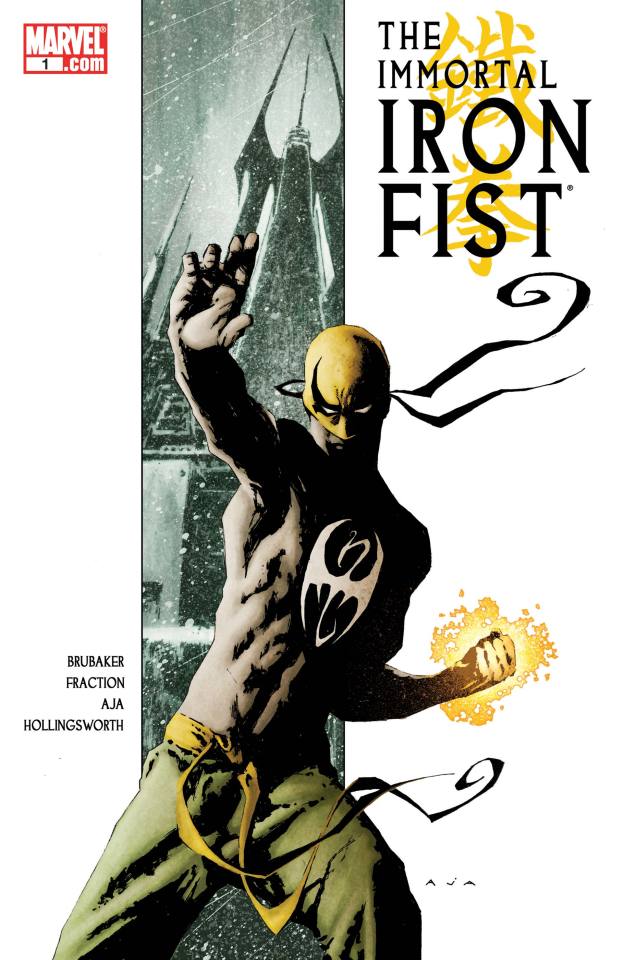
Immortal Iron Fist (2006) Writer Ed Brubaker & Matt Fraction Art David Aja
Issue #1 summary: “Many years ago, in the mystical city of Kun' Lun, young Danny Rand stared at a suit behind glass -- the garb of "the Immortal Iron Fist" -- and knew that he was destined to wear it. But where did this costume come from? Why did it wait for Danny all those years like a shadow of his future?”
Issues: 27
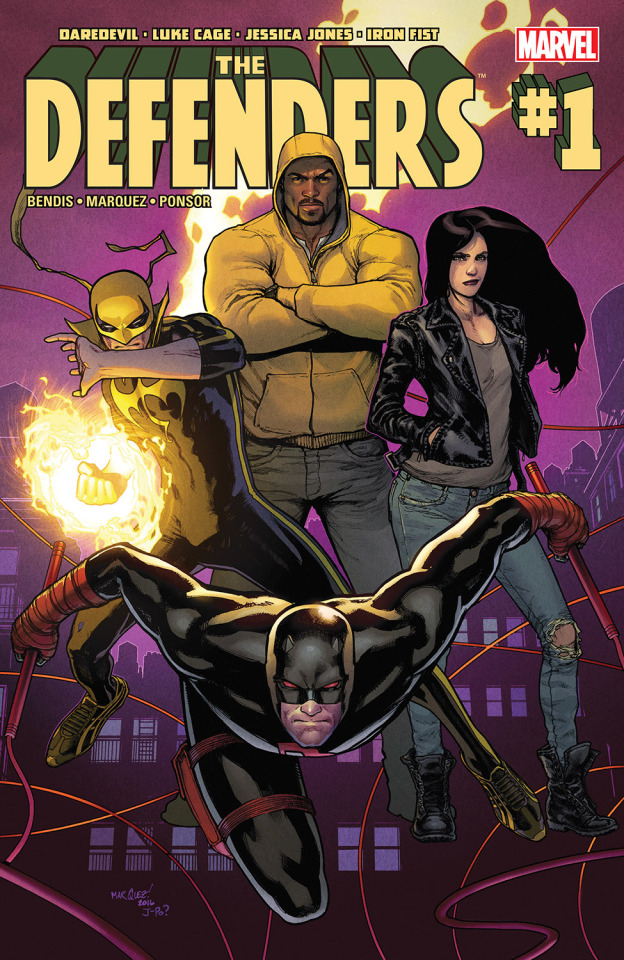
Defenders (2017) Writer Brian Michael Bendis Art David Marquez
Issue #1 Summary: “Daredevil! Luke Cage! Jessica Jones! Iron Fist! Individually, these four heroes have been on the front lines of the battle to keep the streets of the city safe and secure! But now, with a deadly enemy from the dim past making a major move to unite the underworld, they will need to become more — they will need to become DEFENDERS!”
Issues: 10

New Avengers (2005) Writer Brian Michael Bendis Art David Finch
Issue #1 Summary: “After the devastating destruction of the original Avenger's just what sort of threat to the world could persuade Captain America to assemble an all new team? And after the events of AVENGERS DISASSEMBLED, who could possibly be on this team? The answer to the biggest secret in comics is only found right here.”
Issues: 64

Alias (2001) Writer Brian Michael Bendis Art Michael Gaydos
Issue #1 Summary: “Meet Jessica Jones, a former costumed superhero who, in fact, stunk at it. With powers unremarkable in comparison to the great icons of Marvel, Jessica never found her niche. But once she hung up her cape, she was surprised at how quickly she fell out of the spandex loop. Sure, she may hang out with some of The Avengers socially, but she's not welcome in Avengers Mansion. And she feels the rejection. She's self-destructive, drinks too much, and has a huge inferiority complex. And did we mention that she's now a Private Investigator who specializes in cases of the superhuman variety? So if you're thirsty for the film noir feel and complex characterization, grab a stool at the bar!”
Issues: 28

Jessica Jones (2016) Writer Brian Michael Bendis Art Michael Gaydos
Issue #1 Summary: “She is back after a decade! A lot has changed in the Marvel Universe and there are still many secrets hiding in the shadows. Secrets only a special woman like Jessica Jones can hope to uncover. Discover the haunting secrets from Jessica’s past in this blistering new series. Alias Investigations is open for business.”
Issues: 18

Immortal Iron Fist (1975) Writer Chris Claremont Art John Byrne
Issue #1 Summary: “The saga of Iron Fist begins here! Marvel's mystical Kung Fu crime fighter takes center stage in his own ongoing series. First thing on-tap? Rescuing Detective Colleen Wing! Iron Man guest stars, (and dukes it out with Iron Fist.)”
Issues: 15

Ultimate Comics Spider-Man (2011) Writer Brian Michael Bendis Art Sara Pichelli
Issue #1 Summary: “Introducing Miles Morales--the new Ultimate Spider-Man!”
Issues: 30

Captain America: Sam Wilson (2015) Writer Nick Spencer Art Daniel Acuña
Issue #1 Summary: “When Steve Rogers was restored to his natural age, he chose one of his closest and most trusted allies to take up his shield. Now Sam Wilson, formerly the Avenger known as Falcon, carries on the fight for liberty and justice as the all-new, all-different Captain America!”
Issues: 24

Luke Cage - Marvel Digital Original (2018) Writer Anthony Del Col Art Jahnoy Lindsay
Issue #1 Summary: “With Harlem in the grips of an unprecedented heat wave, the people look to their hero—the unbreakable man, Luke Cage! But the heat wave turns out to be the least of Harlem’s worries. Someone has their sights set on the city’s 1%, and the rich and powerful are dropping dead from mysterious illnesses. It’s up to Luke Cage to stop the killer—but he’s just received a grim diagnosis of his own…”
Issues: 3 (broken into 3 chapters each)
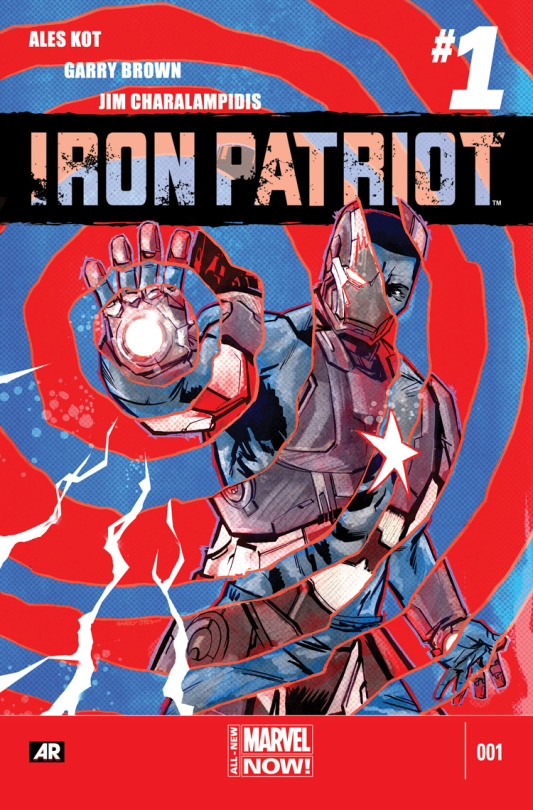
Iron Patriot (2014) Writer Ales Kot Art Garry Brown
Issue #1 Summary: “Jim Rhodes has quit the SECRET AVENGERS!!! As the IRON PATRIOT, he's bringing his fight against the bad guys to the home front. But a new villain emerges with a brutal plan that could turn Iron Patriot into America's most wanted!!!”
Issues: 5

Winter Soldier (2018) Writer Kyle Higgins Art Rod Reis
Issue #1 Summary: “Bucky Barnes believes in second chances. Having escaped death, the loss of identity and a life of murder, the man known as the Winter Soldier has worked hard to atone for his sins. But now…he’s going to go one step further. What do you do when you’ve found redemption? You help others do the same.”
Issues: 5

Daredevil (2019) Writer Chip Zdarsky Art Marco Checchetto
Issue #1 Summary: “Know fear.”
Issues: 19 (ongoing)

Luke Cage Noir (2009) Writer Mike Benson Art Shawn Martinbrough
Issue #1 Summary: “Luke Cage returns to the streets of Prohibition-era Harlem after a stretch in prison. Willis Stryker, Cage's friend turned Godfather of Harlem, wants him on his crew and wealthy socialite Randall Banticoff wants Cage to investigate his wife's death.”
Issues: 5
#comics recommendations#comics#comic#marvel comics#marvel universe#iron fist#immortal iron fist#luke cage#luke cage noir#jessica jones#alias#daredevil#ultimate comics spider man#miles morales#winter soldier 2018#iron patriot#war machine#captain america sam wilson#new avengers#civil war mention#defenders 2017
6 notes
·
View notes
Note
Victorious & iCarly for the ask game
victorious:
my all-time ultimate fave character: JADE WESTa character I didn’t used to like but now do: cat valentinea character I used to like but now don’t: uhhh idk?? the only one i REALLY hate is toria character I’m indifferent about: sikowitza character who deserved better: jade :(a ship I’ve never been able to get into: j*ria ship I’ve never been able to get over: BADE MY ULTIMATE OTPa cute, low-key ship: cat x torian unpopular ship but I still enjoyed it: robbie x andrea ship that was totally wrong and never should have happened: it never actually happened (thank god) but any b*ri momentsmy favourite storyline/moment: any bade moment but!! them getting back together in jade dumps beck with the “you love me again” “who said i stopped?”a storyline that never should have been written: bade’s breakup/anything to do with the worst couplemy first thoughts on the show: i thought it was funny and from the first time i watched it i knew jade was my fave and that t*ri deserved no rightsmy thoughts now: the most special show to me and i have the fondest memories of it and miss it every day
icarly:
my all-time ultimate fave character: spencera character I didn’t used to like but now do: idk if i have one??? maybe nevel just bc he’s funnya character I used to like but now don’t: freddiea character I’m indifferent about: carlya character who deserved better: spencer? maybe???a ship I’ve never been able to get into: carly x freddiea ship I’ve never been able to get over: i didn’t ship anything on this show tbh!!a cute, low-key ship: carly x sam ig???an unpopular ship but I still enjoyed it: don’t have onea ship that was totally wrong and never should have happened: carly x freddiemy favourite storyline/moment: WET AND STICKY IS VERY ICKY STICKY AND WET MAKES MOMMY UPSETa storyline that never should have been written: the entire shipping wars stuffmy first thoughts on the show: thought it was funny and def one of my faves during that nick era (before victorious aired though)my thoughts now: don’t care for it except for some funny moments/memes
send me a tv series!!
2 notes
·
View notes
Text
OC Interview - Erich Richardson
1. Choose an OC
2. Answer them as that OC
3. Tag 5 people to do the same.
I was tagged by @tarberrymentats! I’m for sure tagging @purple-martin111, @mars-colony, and @worthlesssix, but I’m leaving this open for anyone else who see this! Consider yourself tagged! Interview under the break!

1. What is your name?
Captain Erich Richardson, United States Army, 13th Mechanized Calvary Regiment.
2. Any idea why you’re named that?
(shrugs) Not really. I guess mom and dad really liked the name.
3. Single or taken?
In which era of time? (chuckles) Yes. I was married to my high school sweetheart Nora Spencer before... (clears throat) She’s... passed on. I’m now married to a one Ms. Piper Wright.
4. Any abilities or powers?
Um... no. Unless you count being able to sleep anywhere or being able to run long distances.
5. Stop being a Mary Sue
Um... okay? Don’t know why you’d say that, but okay.
6. What color are your eyes?
Brown~ish amber? I’m not sure. I’ve been told both.
7. What about your hair color?
I’d say it’s brown. Piper, on the other hand, would say that there’s a trace of red in there.
8. Do you have any family members?
(shifts uncomfortably in seat) Uh... that’s complicated. I have a son and my wife, but beyond that, no. Unless you count my friends, then yes. Most of my biological family either died before the Great War or very soon after.
9. Oh... What about pets?
Oh yeah hahaha. Dogmeat is my dog. Smartest pup you’ll meet in the Commonwealth, and the best dog to boot.
10. Ain’t that the truth. Now what is something that you don’t like?
I’d have to say that I’m not a fan of having to raising my son in the post-apocalypse, but that’s a little out of my hands.
11. What is your favorite hobby?
This might sound weird, but I enjoy running. We had to run in the army for PT, but I also ran competitively while I was in school. I love getting my laps in around the Island, and to run down the streets of downtown. If the place wasn’t crawling with things that would love to kill me, I’d love to run the old Boston Marathon route. I also really like tinkering with my power armor, making sure it’s the best in the Commonwealth.
12. Have you hurt anyone in any way before?
Define “hurt”... either way, I’m pretty sure I have.
13. I guess a good follow-up question would be have you killed anyone?
(shifts awkwardly in seat again and stare at the floor. silence for a few moments before he responds) Yeah. More than my fair share.
14. What are some of your worst habits?
Wow, hitting with the hard questions? Um... I swear too much, sleep too little or sleep too much, and I can be really rude to everyone.
15. Who would you say are your role models?
Oh boy... Before the war, it was my dad. He’s the one who was always strong, always shouldered the burdens that were put on his shoulders. I wanted to be like him when I grew up. I’ve been pretty lucky to meet some people out here who inspire me to be better, particularly Nick Valentine. Nick really took me under his wing when I first stumbled into Diamond City, and I try every day to live in a way that would make him and dad proud.
16. Do you go to school?
The only school I go to right now is the school of wasteland survival. Before the war, I went to Utah Institute of Technology and Agriculture, as well as The United States Military Academy. I studied general engineering at both, which I can tell you has come in handy in so many ways out here in the Commonwealth.
17. Do you ever want to get married and have kids?
Come on, man, I told you I’m already married and have a kid hahaha. Now... having more kids? I dunno man. Piper and I have kinda talked about it ever since Shaun joined our family. It’s just... The world now is so different, and I don’t know if I could bring another kid into the world like this one.
18. Any fangirls/boys?
Um... I mean, I think Curie might be a little sweet on me, but she feels like she owes me a lot for what I’ve helped her through. Paladin Danse and Hancock, maybe. Both have a hard time admitting I’m a better shot haha.
19. What are you most afraid of?
Deathclaw packs. There was a dinosaur movie that came out a few years before the Great War called Triassic Sanctuary. In the movie, a certain type of dinosaur hunted in packs, and were hyper-intelligent. Deathclaws are like that, but ten times worse. Other than that, I hate how ferals seem to pop out of nowhere.
20. What do you normally wear?
Depends on what I’m doing. If I’m here in the Commonwealth, it’s my Vault 111 jumpsuit with my armor. If I’m back on the homestead on Spectacle Island, generally a t-shirt and jeans.
21. What is your favorite food?
Pre-war? Mom’s funeral potatoes. Now? Preston and I have got a pretty good deathclaw steak recipe figured out. Do NOT ask how long it took us to get it figured out. Or how many fusion cells we used in the process.
22. In what economic class would you put yourself?
Seriously dude? Pre-war, Nora and I were comfortably middle class. Now? I’m no Upper-Standser, but I make enough to get by well enough.
23. Do you have many friends?
Yeah, I’ve got people that I consider friends. But I’ve got more that I consider my family.
24. What is your favorite drink?
I’m a fan of cherry vanilla Nuka-cola, but it is a little scarce here in the Commonwealth these days. It was everywhere out west in the Four States Commonwealth pre-war.
25. What are your thoughts on pie?
That I haven had a legit banana creme pie in over two centuries...
26. What is your favorite place?
I love Spectacle Island. I love how it’s removed from everything, and it’s peaceful. Sanctuary has a special place in my heart, too, but it’s really difficult to stay there without Nora...
27. That makes me wonder; what was Nora like?
Oh man, where to start... The first thing I noticed when I first saw her was her smile, and how it just lit up a room. She had this infectious laugh that made me feel like I was flying. But she was tough. She was the captain of our high school’s women’s track team her junior and senior years. She was a fast, tough, and gutsy runner, which translated into how tough she was in general. But she was smart, a whole lot smarter than me. To be honest, she knew just as much about engineering from helping me get through classes on top of her law classes.
28. So is it safe to say that Piper is a lot like Nora? Do you have a type?
If by type you mean tough, compassionate women who push me to be better than I would be on my own, then yes; yes I do.
29. Where would you rather swim, the ocean or a lake?
Nothing can beat swimming in the Bear Lake on the Utah-Idaho border, especially during raspberry season. I never learned how bad it is back west...
30. Any last thoughts?
Nope, not that I can think of.
#fallout 4#oc interview#sole survivor#Piper Wright#preston garvey#nick valentine#paladin danse#Dogmeat#fallout 4 fanfic
24 notes
·
View notes
Photo

For the week of 11 March 2019
Quick Bits:
Age of Conan: Bêlit #1 expands Marvel’s Conan franchise further with the beginning of this limited series featuring the early days of the notorious pirate Queen of the Black Coast. Tini Howard, Kate Niemczyk, Jason Keith, and Travis Lanham deliver a compelling story setting up the tragedy of Bêlit’s early life and her one-track mind for adventure on the high seas.
| Published by Marvel
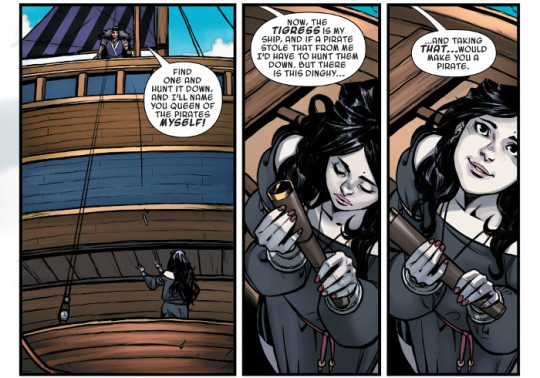
Amazing Spider-Man #17, after two preludes (one branded, one not) and a simmering sub-plot of Taskmaster and Black Ant kidnapping the villains running for months, finally gives us part one of “Hunted” from Nick Spencer, Humberto Ramos, Victor Olazaba, Edgar Delgado, and Joe Caramagna. And it’s essentially more set-up. Don’t get me wrong, it’s still great, building anticipation for the hunt to really start in earnest, but it’s a slow build.
| Published by Marvel

Animosity #19 starts trying to pick up the pieces after the fall of the Walled City. There’s some very interesting questions raised regarding survival and existence from Marguerite Bennett in this one, as both the animals and humans try to figure out a way to bridge the divide.
| Published by AfterShock

Asgardians of the Galaxy #7 concludes this arc with Sera and the Ravagers, as they team up to help refugees and Ego, the Living Planet. I still think it’s weird to see essentially the movie version of Yondu in present day 616 continuity, but Cullen Bunn keeps this fun. I suspect that Sera/Angela fans will still be disappointed, though.
| Published by Marvel

Assassin Nation #1 is the exciting debut of this action thriller, somewhat in the vein of Skybound’s other title Die!Die!Die! mixing elements of extreme violence, action, and a bit of humour, from Kyle Starks, Erica Henderson, and Deron Bennett. It’s a damn good set up, immersing us into a world of assassins jockeying for a number one spot, screwing one another over and turning on them for the highest bidder, with two interesting hooks of “Chekhov’s Gun” trying to figure out who’s trying to kill him and Bishop searching for who killed his husband. Phenomenal art from Henderson, with some very inventive death sequences.
| Published by Image / Skybound
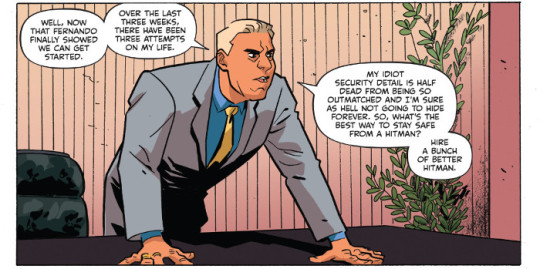
Avengers: No Road Home #5 takes it up another notch as the Avengers continue to battle against Nyx and her children, this time narrated by Scarlet Witch. The fight on Nightmare’s front gets particularly interesting as we see how scary Hulk has really become, along with a humorous fight between Hawkeyes. Sean Izaakse and Marcio Menyz really turn in some incredible artwork here. And the final scene is pretty savage.
| Published by Marvel

The Batman Who Laughs: The Grim Knight #1 isn’t something I was going to pick up, but I saw some gushing about it from people I trust and decided on a last minute purchase. Like the rest of the Batman Who Laughs mini-series, this is dark, giving us a “Batman” who picked up the gun that was used to murder his parents, and, though technically proficient, isn’t really for me. What I do really appreciate, though, is the artwork from Eduardo Risso and Dave Stewart. It is gorgeous, with Risso continuing to explore some of the softer, painted style that he’s used in Moonshine and Hit-Girl. It really is worth the price of admission.
| Published by DC Comics
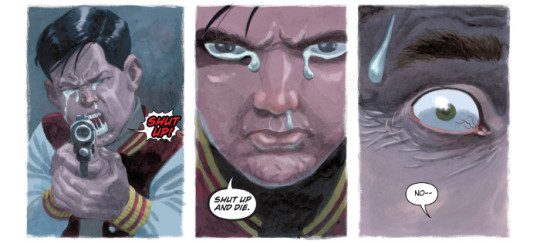
Buffy the Vampire Slayer #3 continues to be one of my favourite comics each month. Jordie Bellaire, Dan Mora, Raúl Angulo, and Ed Dukeshire are presenting a story here that so perfectly captures the spirit and fun of the television series, while also just being a great original tale. It’s fun to see the old faces in new situations, but it’s also an enjoyable story in its own right, introducing us to the characters and tossing them into the chaos.
| Published by BOOM! Studios
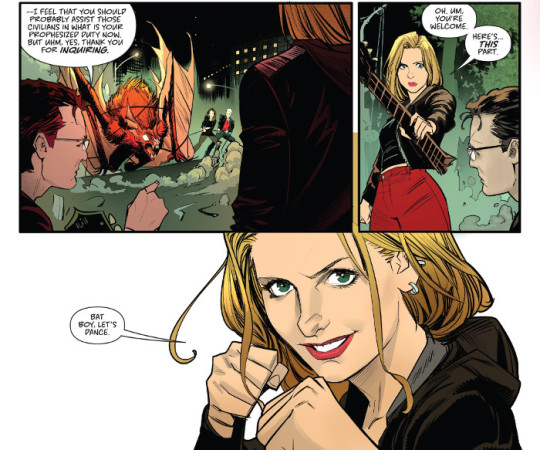
By Night #9 gives us Jane’s mom’s history with Charlesco and more or less the origin of the portal and the experiment. It’s particularly interesting as John Allison, Christine Larsen, Sarah Stern, and Jim Campbell tell the story in the visual style of an early ‘90s comic. There’s even a nice little nod to the Marvel Bullpen in there.
| Published by Boom Entertainment / BOOM! Box
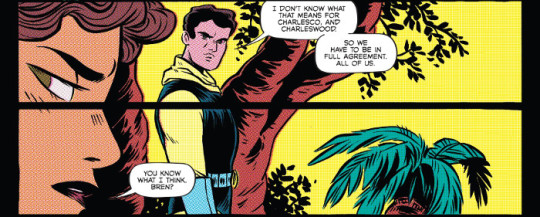
Calamity Kate #1 introduces us to Kate, Vera, Jade and a world of monster hunting in this debut from Magdalene Visaggio, Corin Howell, Valentina Pinto, and Zakk Saam. Between this, The Girl in the Bay, and the forthcoming Dark Red, I’m loving the higher profile that Howell is carving for herself. She’s a great artist with excellent versatility.
| Published by Dark Horse

Catwoman #9 is a fill-in issue from Ram V, John Timms, and Josh Reed that’s one part revenge tale and one part heist, resulting overall in one hell of a good single issue. There’s a nice sense of rhythm and pacing to the story that fits with the theme of the heist, with some great artwork.
| Published by DC Comics
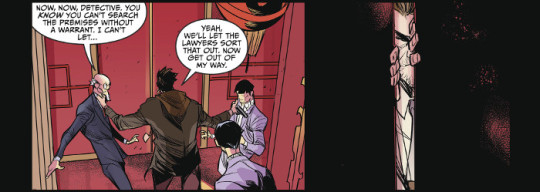
Cover #6 brings what has been one of the most unique, ambitious, and inventive uses of the comics medium I’ve seen in a long time to a close, with a bit of conversation and some gorgeous art from Brian Michael Bendis, David Mack, Zu Orzu, and Carlos M. Mangual. It get even more meta this issue, along with the usual multi-layered storytelling that delves into the comics world.
| Published by DC Comics / Jinxworld
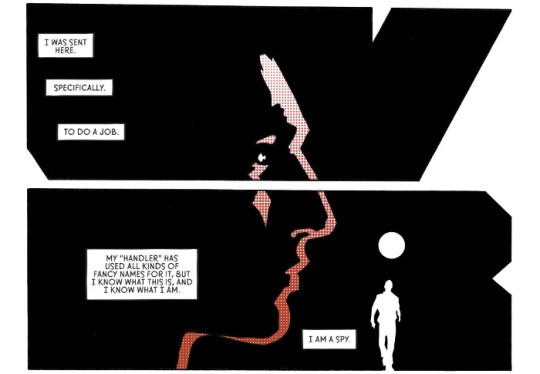
Cyber Force #9 more or less completes the gathering of the team, presenting a bit of a quiet moment to collect themselves before setting up a confrontation with Cyberdata. There’s some interesting soul-searching between Dominique and Ripclaw on whether or not with the change they’re still them. And, as usual, the art from Atilio Rojo is pretty much worth the price of admission on its own.
| Published by Image / Top Cow

The Empty Man #5 has some gorgeous artwork by Jesús Hervás and Niko Guardia, especially among the repeating cycles of the opening and closing scenes.
| Published by BOOM! Studios

The Flash #66 brings back the single issue Rogue profile format for an origin story of the original Trickster, James Jesse, from Joshua Williamson, Scott Kolins, Luis Guerrero, and Steve Wands. Great art from Kolins and Guerrero.
| Published by DC Comics

The Freeze #4 concludes the first arc, with a very satisfying reveal of the serial killer and confirmation on a few other ongoing plot threads that nicely serve as a hook for future arcs. I’m really enjoying this one. Dan Wickline, Phillip Sevy, and Troy Peteri are telling a very compelling story here about essentially rebuilding society from a very different form of cataclysm, with some wonderful character-building and enough intrigue to keep you on your toes.
| Published by Image / Top Cow

Grimm Tales of Terror #13 is one of the better recent issues, with Joe Brusha, Umberto Giampà, Fran Gamboa, JC Ruiz, and Fabio Amelia diving into the story of a true crime writer investigating a serial killer in Detroit utilizing the signatures of other famous serial killers. There are a few really nice twists throughout the tale.
| Published by Zenescope
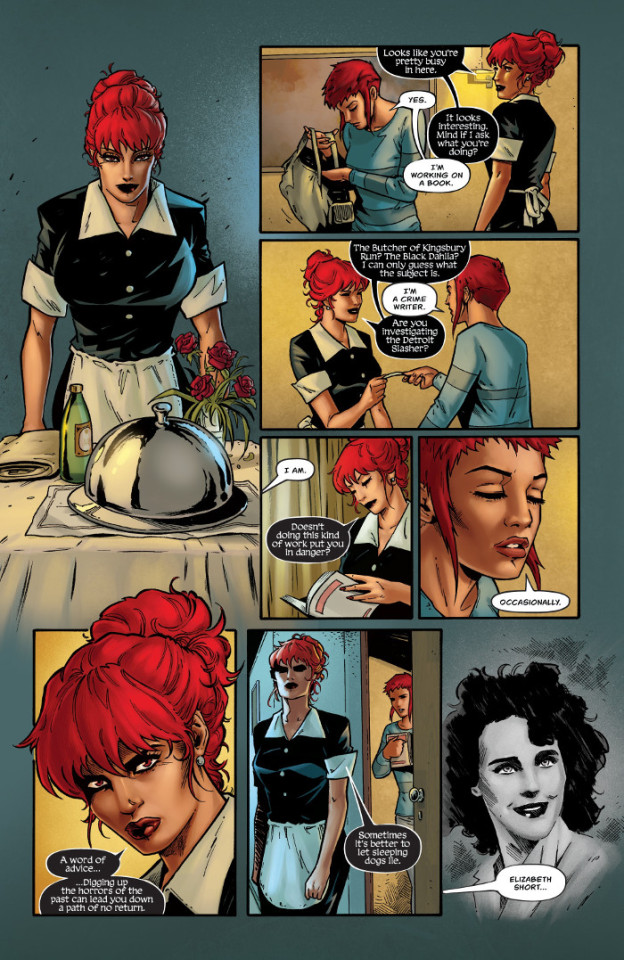
Gunning for Hits #3 throws a few wrinkles into Martin’s plans for Stunted Growth and Brian Slade as Slade’s bodyguard, “Mr. Gladstone”, causes problems while trying to extort Martin. This continues to be a dense, but satisfying, read every month. It feels like Jeff Rougvie, Moritat, and Casey Silver are just packing in as much content as they possibly can.
| Published by Image
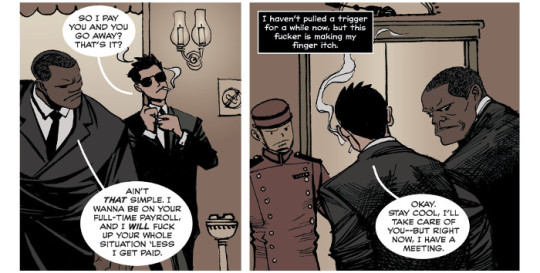
Hawkman #10 features a larger than life confrontation between Hawkman and Idamm. Bryan Hitch, Andrew Currie, and Jeremiah Skipper deliver nicely on that widescreen epic feel of the assault on London.
| Published by DC Comics
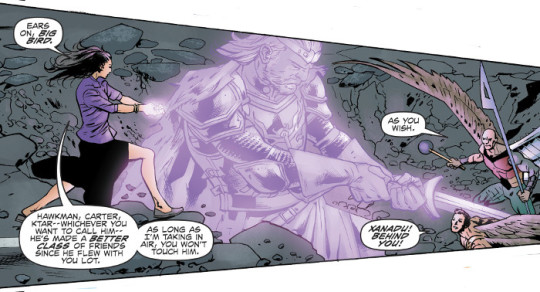
Hit-Girl Season 2 #2 gets up close and personal with the uglier side of Hollywood as Kevin Smith, Pernille Ørum, Sunny Gho, and Clem Robins continue their arc featuring the adaptation of Hit-Girl’s side of the story from Kick-Ass by the film industry. Things get a little complicated.
| Published by Image

House Amok #5 concludes what has been an excellent, mind-bending series exploring truth and delusion and the power of family, from Christopher Sebela, Shawn McManus, Lee Loughridge, and Neil Uyetake. This finale doesn’t give any easy answers and actually raises a few more questions, all with some gorgeous artwork from McManus and Loughridge.
| Published by IDW / Black Crown

James Bond: Origin #7 begins “Russian Ruse” with Ibrahim Moustafa and Roman Stevens taking over art duties, joining Jeff Parker and Simon Bowland in this tale of essentially piracy in the Barents Sea. Nice set up of the Russians’ duplicity here and an inept Commander not listening to Bond’s observations.
| Published by Dynamite

Justice League Dark #9 unleashes the Lords of Order against pretty much everyone, causing death and destruction as they try to “cleanse” reality of the chaos they think infests it. Between them and the Otherkind, things aren’t looking particularly cheery for existence. Incredible artwork from Alvaro Martínez Bueno, Miguel Mendonça, Raul Fernandez, and Brad Anderson.
| Published by DC Comics

Little Bird #1 is an experience. Darcy Van Poelgeest, Ian Bertram, Matt Hollingsworth, and Aditya Bidikar launch a dystopian future where a theocratic America seems to rule with an iron fist and a pocket resistance holds out in the Canadian Rockies. There’s a bit of a feel of Akira here, and Grendel: God and the Devil, maybe even a little Martha Washington, but still with its own unique elements and some seriously awesome art from Bertram and Hollingsworth.
| Published by Image
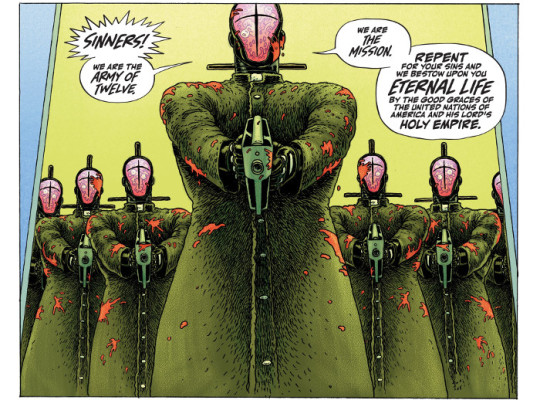
Livewire #4 concludes the first arc with a nice bit of soul-searching as Amanda comes to terms with what she did during Harbinger Wars 2. Between this, Age of X-Man: Prisoner X, and this week’s Shuri, Vita Ayala is definitely on fire right now. They’re doing some great character-driven work and it shines in this finale. Also, Raúl Allén and Patricia Martín can do no wrong. The layouts on this book are stunning.
| Published by Valiant
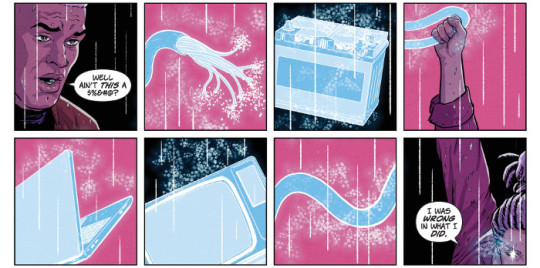
The Magnificent Ms. Marvel #1 is the beginning of a new era for Kamala Khan from Saladin Ahmed, Minkyu Jung, Juan Vlasco, Ian Herring, and Joe Caramagna. Using a kind of fable narration, setting up something new for the future while dealing with a continuation from Kamala’s current status in the presents, is a nice approach from Ahmed. It also marks a good jumping-on point for new readers as it recaps more or less what you need to know about Ms. Marvel’s history. Beautiful art from Jung, Vlasco, and Herring.
| Published by Marvel

Murder Falcon #6 is an epic, face-melting issue. Daniel Warren Johnson and Mike Spicer give us a bit of a tearjerker as Anne comes to terms with her situation with Jake and finally finds her voice. It’s really incredible. Also, giant monsters and metal.
| Published by Image / Skybound

Oblivion Song #13 jumps ahead three years for a new status quo, a few shuffled faces, and new situations for many of the cast of characters, providing an excellent jumping on point for new readers. There are some interesting bits about harnessing the flora and fauna of Oblivion for medical advances and the growing mystery about what the Faceless Men are doing. Gorgeous art as always from Lorenzo De Felici and Annalisa Leoni. De Felici really does some amazing reaction shots.
| Published by Image / Skybound

Old Man Quill #3 advances the Guardians’ story a bit further as they celebrate what little hope they’ve brought to the Wastelands, while hell in various forms circulates around them. It certainly pretty bleak, even in the good times.
| Published by Marvel

Outer Darkness #5 drops hell on the crew’s head as they crash on a relatively inhospitable ice planet with an ancient evil prowling and the crew at “Each Other’s Throats”. Also, naked cat girls. John Layman, Afu Chan, and Pat Brosseau are doing an incredible job with this mix of sci-fi and horror and the stakes seem to have been raised this issue.
| Published by Image / Skybound

Shuri #6 begins a two-part guest arc from Vita Ayala, Paul Davidson, Tríona Farrell, and Joe Sabino as Shuri travels to New York in search for the Lubber. Great art from Davidson and Farrell and Ayala has a wonderful feel for Miles and Shuri’s voices.
| Published by Marvel

Spider-Gwen: Ghost Spider #6 continues to suss out a new role for Gwen now that her identity is public and she’s returned to her own Earth. The character building that Seanan McGuire is doing here is pretty spectacular, especially given how strong the interpersonal relationships in the series were to begin with under Jason Latour and Robbi Rodriguez. Also, the art from Takeshi Miyazawa and Ian Herring is perfect.
| Published by Marvel

Star Wars: Age of Republic - General Grievous #1 is the last of these Age of Republic one-shots from Jody Houser, with Age of Rebellion coming next from Greg Pak and a rotating team of Chris Sprouse, Marc Laming, and others. This one focuses on Grievous and is a nice look into what he traded of himself in order to become the even worse monster that we see in the prequel trilogy and Clone Wars.
| Published by Marvel

The Stone King #4 concludes what has been a wonderful light fantasy adventure Comixology original series from Kel McDonald and Tyler Crook. There’s an interesting throughline in the story of responsibility for family versus responsibility for the greater society that comes to a head here, along with misunderstandings continuing to cause conflict. It’s not exactly a happy ending, but there is a set up for something more down the road that I’d love to see. Beautiful artwork from Crook.
| Published by Kel McDonald
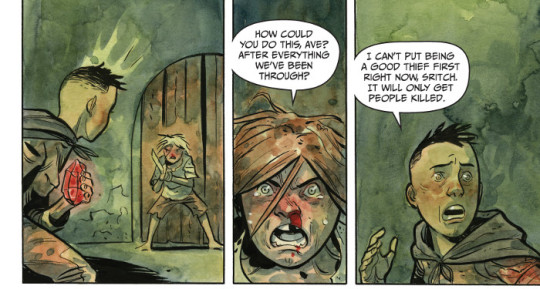
Supergirl #28 concludes her jaunt with the Omega Men and the Supergirl clones, opening up more questions about The Circle and the destruction of Krypton. I’ve enjoyed the circuitous route Marc Andreyko has been taking us on to advance Supergirl’s mission, tossing bits of side adventure in growing out of her search, but it feels like we’re going to get down to brass tacks soon. Great art again this issue from Eduardo Pansica, Julio Ferreira, FCO Plascencia, and Chris Sotomayor. Pansica does some great horror and creature work and it shines through in the Kryptonian monstrosities.
| Published by DC Comics
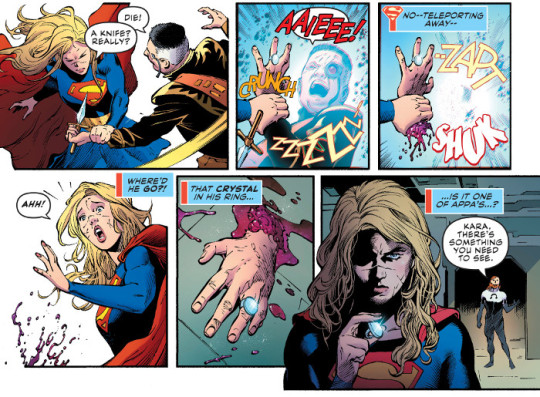
Superman #9 tells of Jonathan’s ordeal trapped on Earth 3, tortured at the hands of Ultraman. Great art from Brandon Peterson and Alex Sinclair during the Earth 3 sequences. It’s also interesting to see that dream still haunting Superman.
| Published by DC Comics
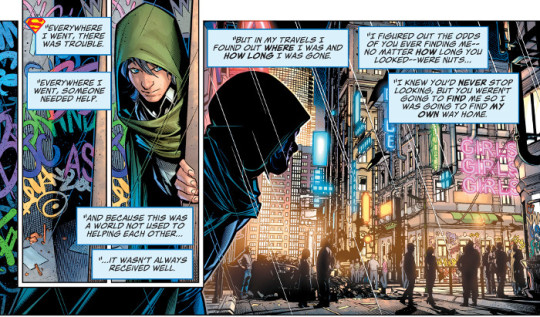
Teenage Mutant Ninja Turtles: Shredder in Hell #2 continues to be revelatory. Mateus Santolouco, Marcelo Costa, and Shawn Lee are doing some incredible work as Shredder continues to be plagued by nightmares, demons, and the undead as he tries to figure out his way through hell and his status as a vessel for the dragon god’s spirit. Over the years, Santolouco has grown exponentially as a storyteller and this is just a masterpiece.
| Published by IDW
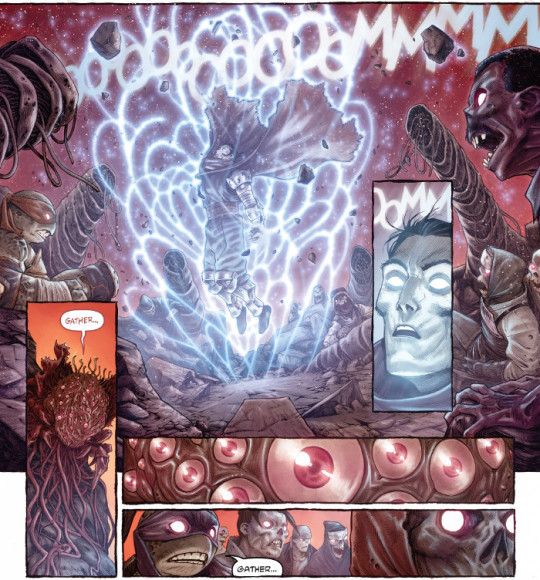
Titans #35 continues the team’s nightmare excursion to Unearth, fighting a possessed enraged Beast Boy, Raven’s angry aggressive side, and Mother Blood as we head into the series conclusion next issue. This is a very entertaining story from Dan Abnett, Bruno Redondo, Christian Duce, Marcelo Maiolo, and Dave Sharpe, really putting the team behind the 8-ball wondering how they’re going to get out of this mess. If they get out this mess.
| Published by DC Comics

Tony Stark: Iron Man #9 continues the “Stark Realities” arc, nicely advances Controller’s assault on Stark Industries, the eScape users causing havoc, the mole within Stark, and the corruption causing Tony’s current simulation, from Dan Slott, Jim Zub, Valerio Schiti, Paolo Rivera, Edgar Delgado, and Joe Caramagna. Some really interesting possible revelations about Tony during this issue.
| Published by Marvel

Transformers #1 begins a new continuity, a new universe, a new era for the Transformers, from Brian Ruckley, Angel Hernandez, Cachét Whitman, Joana Lafuente, and Tom B. Long, as we start off some time in the past of Cybertron, before Autobots or Deceptions, as Bumblebee watches over a newly-forged Cybertronian as he makes his first decisions. We also get bits of an uprising of “Ascenticons”, though their ideals and motivations aren’t really explained, just showing a disagreement between longtime friends Megatron and Orion Pax (not Optimus Prime yet). It’s not bad, with some nice bits of humour, and there is an interesting mystery for a cliffhanger, but it is slow. The art is nice, but like the story there’s nothing flashy about this right now. I’ll certainly give it a few more issues, but there’s really nothing “bold” about this new era. Don’t expect something radical out of the first issue, this one plays it pretty safe.
| Published by IDW
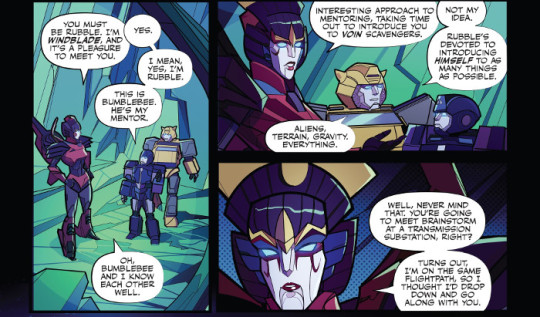
Winter Soldier #4 delves into RJ’s father, Richie, attempting to get back into his life. It’s heartfelt and bittersweet, with Kyle Higgins, Rod Reis, and Clayton Cowles delivering a gripping tale with one hell of a set up for the final issue. Reis’ art remains absolutely incredible.
| Published by Marvel

Wonder Twins #2 is more fun from Mark Russell, Stephen Byrne, and Dave Sharpe. There’s some nice commentary on the state of corporate run prisons in the United States in amongst a humorous send-up of z-list villains in the Legion of Doom’s farm team, the League of Annoyance. Great art from Byrne.
| Published by DC Comics / Wonder Comics

Other Highlights: Accell #19, Auntie Agatha’s Wayward Home for Rabbits #5, Blackbird #6, Dark Ark #15, GI Joe: A Real American Hero - Silent Option #4, Go Go Power Rangers #18, The Goon #1, Head Lopper #11, House of Whispers #7, LaGuardia #4, The Life and Death of Toyo Harada #1, The Long Con #7, Marvel Action: Spider-Man #2, Marvels Annotated #2, The Maxx 100 Page Giant, Prodigy #4, The Punisher #9, Radio Delley, Rick & Morty Presents Jerry #1, Riverdale: Season 3 #1, Runaways #19, Spider-Man/Deadpool #47, Star Trek: Discovery - Captain Saru, Star Wars: Han Solo - Imperial Cadet #5, The Unbeatable Squirrel Girl #42, Wonder Woman #66
Recommended Collections: Astonisher - Volume 3: Black Hat, Batman vs. Deathstroke, By Night - Volume 1, Defenders: The Best Defense, Infinite Dark - Volume 1, Mata Hari, Moonstruck - Volume 2, Rick and Morty vs. Dungeons & Dragons, Shadowman - Volume 3: Rag & Bone, She Could Fly, Sleepless - Volume 2, Star Wars Adventures - Volume 5: Mechanical Mayhem, Strangers in Paradise XXV - Volume 2: Hide and Seek, Trout - Volume 1: Bits & Bobs, Vampironica - Volume 1, The War of the Realms Prelude

d. emerson eddy knows a muffin man.
2 notes
·
View notes
Note
I am so very glad Nick Spencer is getting Peter and MJ back together. I'm also glad he's reversing a lot of dumb decisions that Slott has made during his run, such as turning Black Cat into a villain obsessed with regaining her nonexistent villain cred when she was in fact more well known as a vigilante allied with Spider-Man... honestly, I'm actually looking forward to new issues of Spider-Man with him at the helm. It's almost unreal.
I’d need to double check this but I get the impression Spencer is a 80s-2000s era Spider-Man fan.
Likes Black Cat.
Apparently likes MJ and the marriage and references a good but relatively untalked about annual all about them.
Did Superior Foes which was a ‘sequel’ to two 1990s mini-series.
12 notes
·
View notes